Baan Kang Wat began as more than a market. It was envisioned as a creative village, a place where artisans could live, work, and showcase their craft in harmony with one another. The project took root in the late 2010s when a group of Chiang Mai-based artists and designers recognized the need for a space that was neither overly commercial nor disconnected from local traditions. Rather than setting up another weekend market designed primarily for tourists, they sought to create a sustainable, community-driven hub where art could thrive organically.
The name itself, “Baan Kang Wat,” means “the house beside the temple.” True to its name, the market sits near Wat Ram Poeng, one of Chiang Mai’s meditation-focused temples. This proximity gives the space an added layer of tranquility, anchoring it in Chiang Mai’s spiritual and cultural fabric. The founders wanted visitors not just to browse stalls, but to slow down, reflect, and appreciate the creative process. In doing so, Baan Kang Wat became part of a broader story: Chiang Mai’s transformation into a regional hub for art, design, and sustainable living.
The layout and atmosphere
Walking into Baan Kang Wat feels like stepping into an intimate village. Pathways wind between small, wooden houses draped in vines and shaded by tall trees. Each building is unique—some painted in bright colors, others left in natural wood tones, all of them designed with a rustic, handmade aesthetic that blends seamlessly into the surrounding greenery. Bamboo fences, potted plants, and whimsical decorations—such as mosaic murals or handmade lanterns—add layers of character to the space.
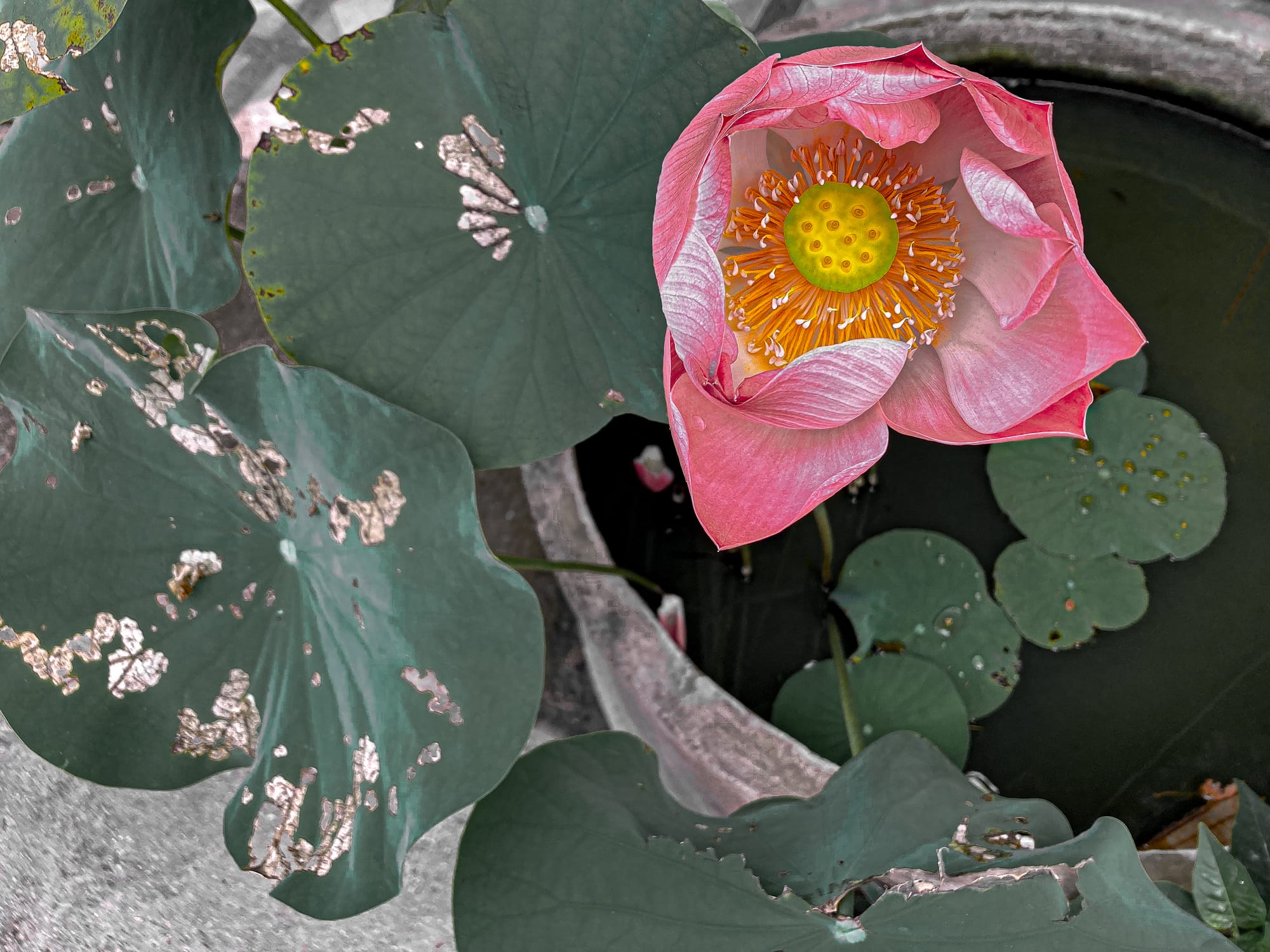
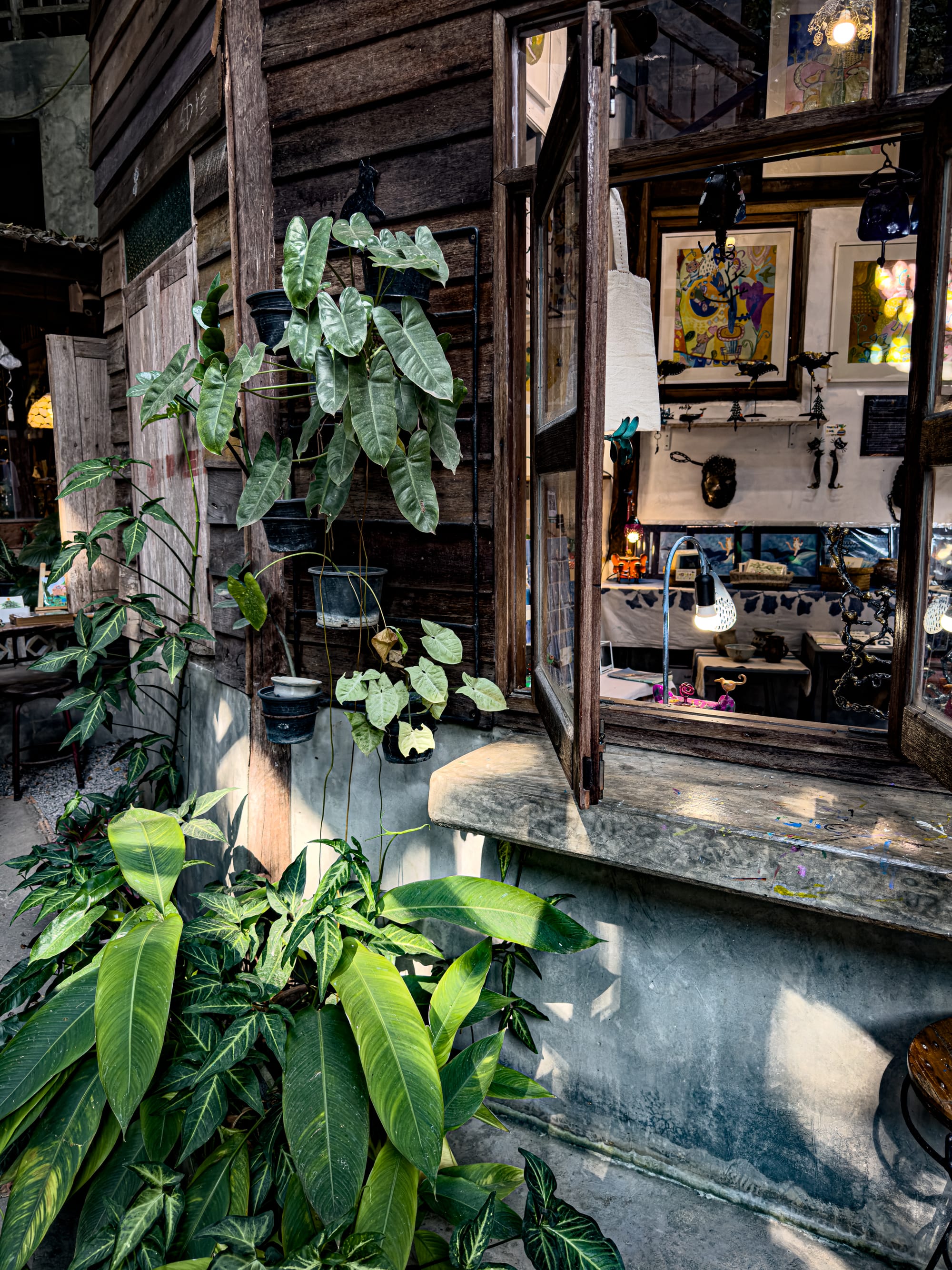
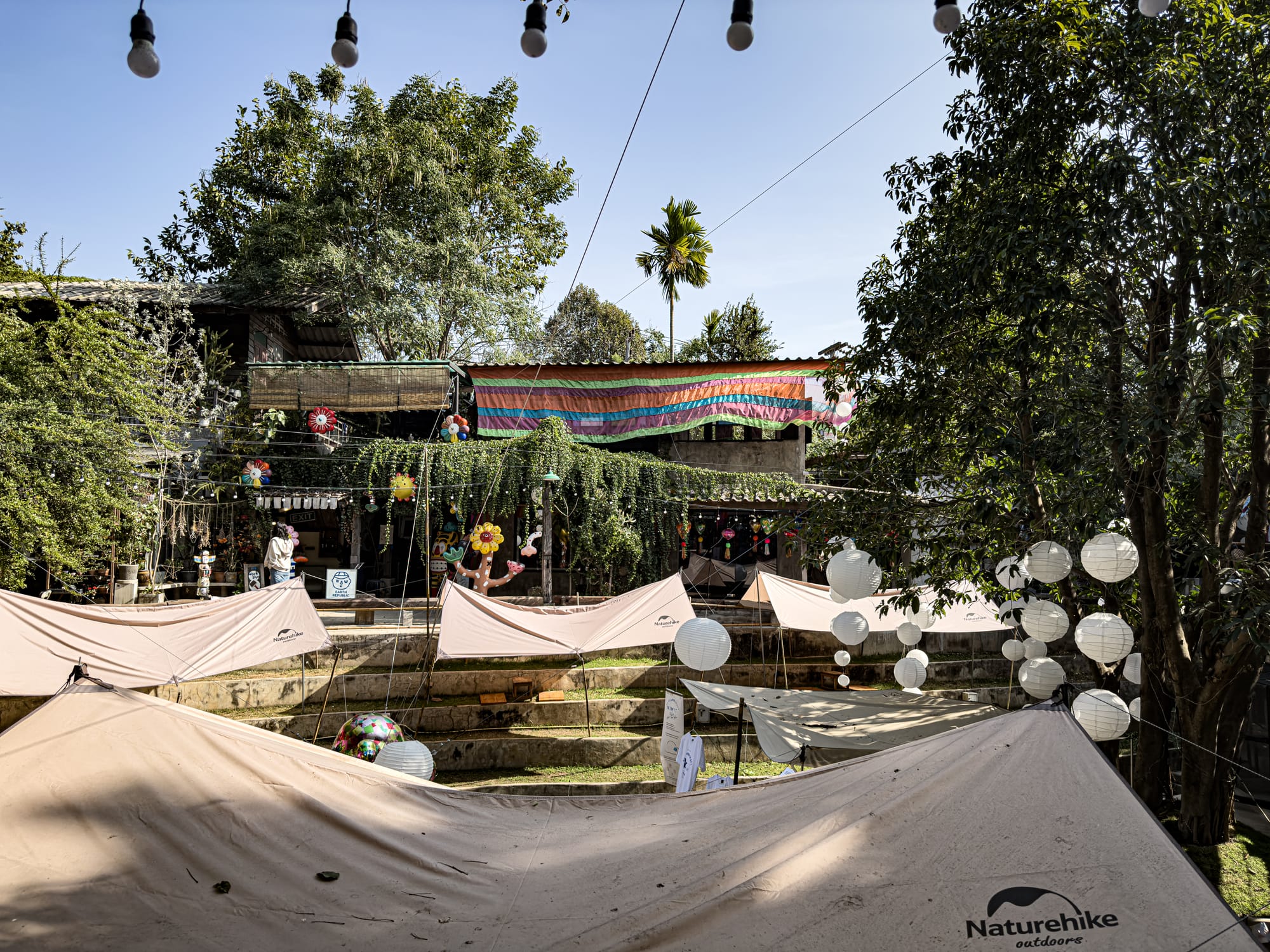
Shaded courtyards and colorful storefronts at Baan Kang Wat, where greenery and handmade details set the scene
Unlike Chiang Mai’s larger markets, which can feel overwhelming with their noise and crowds, Baan Kang Wat has a calm, inviting rhythm. Musicians sometimes play acoustic sets in a courtyard, while families linger over coffee in one of the cafés. The air carries a mix of aromas: fresh-ground coffee, herbal teas, handmade soap, and the sweet scent of flowering plants. You’ll find open courtyards where artists spread out their tools, working on pottery or painting, allowing visitors to see the act of creation as much as the finished product.
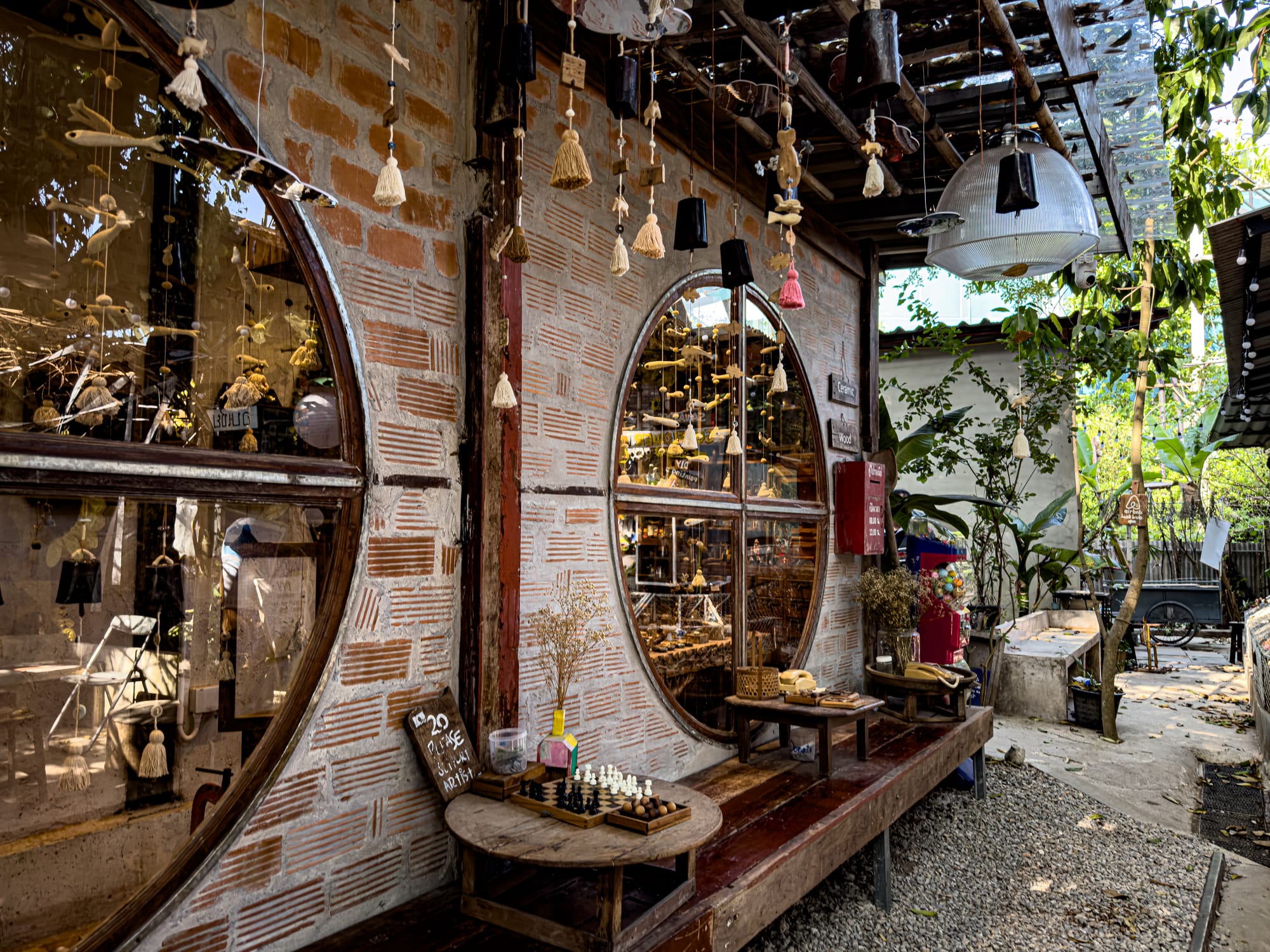
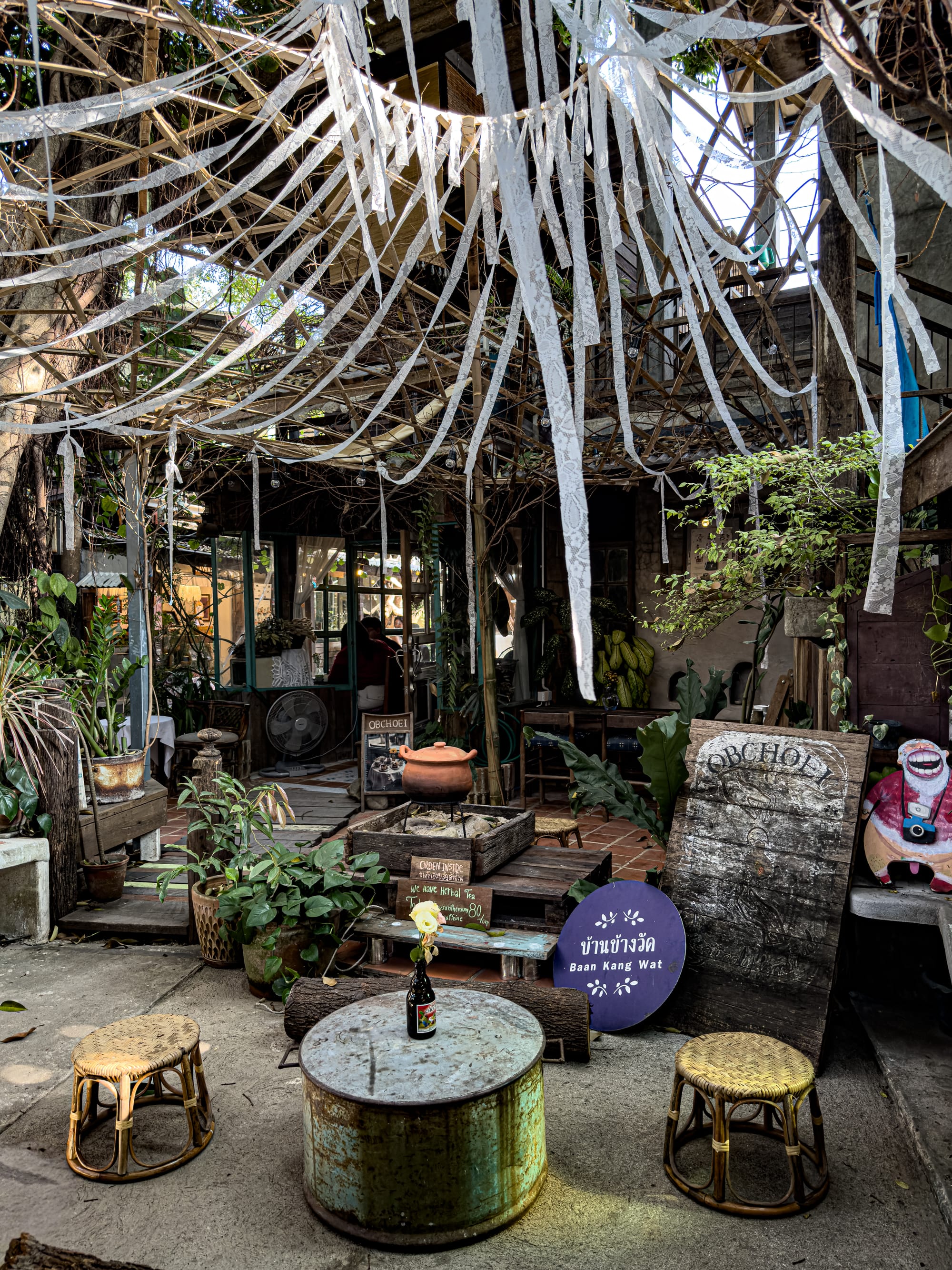
Charming shopfronts and cozy corners at Baan Kang Wat
The vibe is thoughtful and personal. There is no sense of mass production or rush. Instead, every detail—from the handwritten signs to the small seating areas tucked under trees—contributes to an atmosphere that feels both carefully designed and naturally welcoming.
Cafés and gathering spaces
Baan Kang Wat is not just a place to shop—it’s a place to linger. Cafés here are integral to the experience, and each one offers its own personality. Some are small wooden houses with mismatched chairs, shelves lined with ceramics, and windows that open out to leafy courtyards. Others are brighter, modern spaces with polished concrete floors and carefully curated art on the walls. The drinks, too, reflect this creativity: cold brews infused with herbs, colorful teas served in handmade cups, and smoothies blended with local fruit.
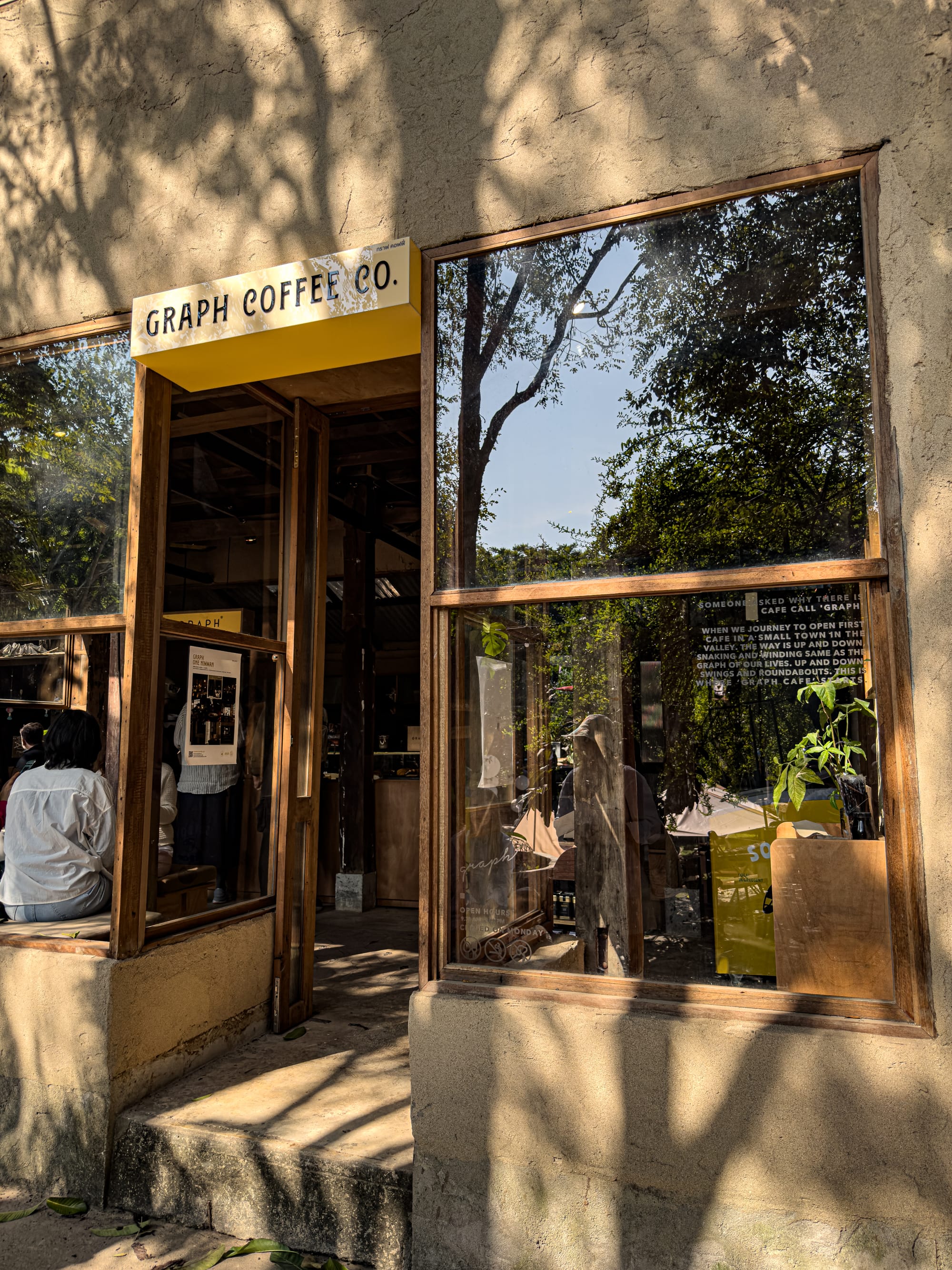
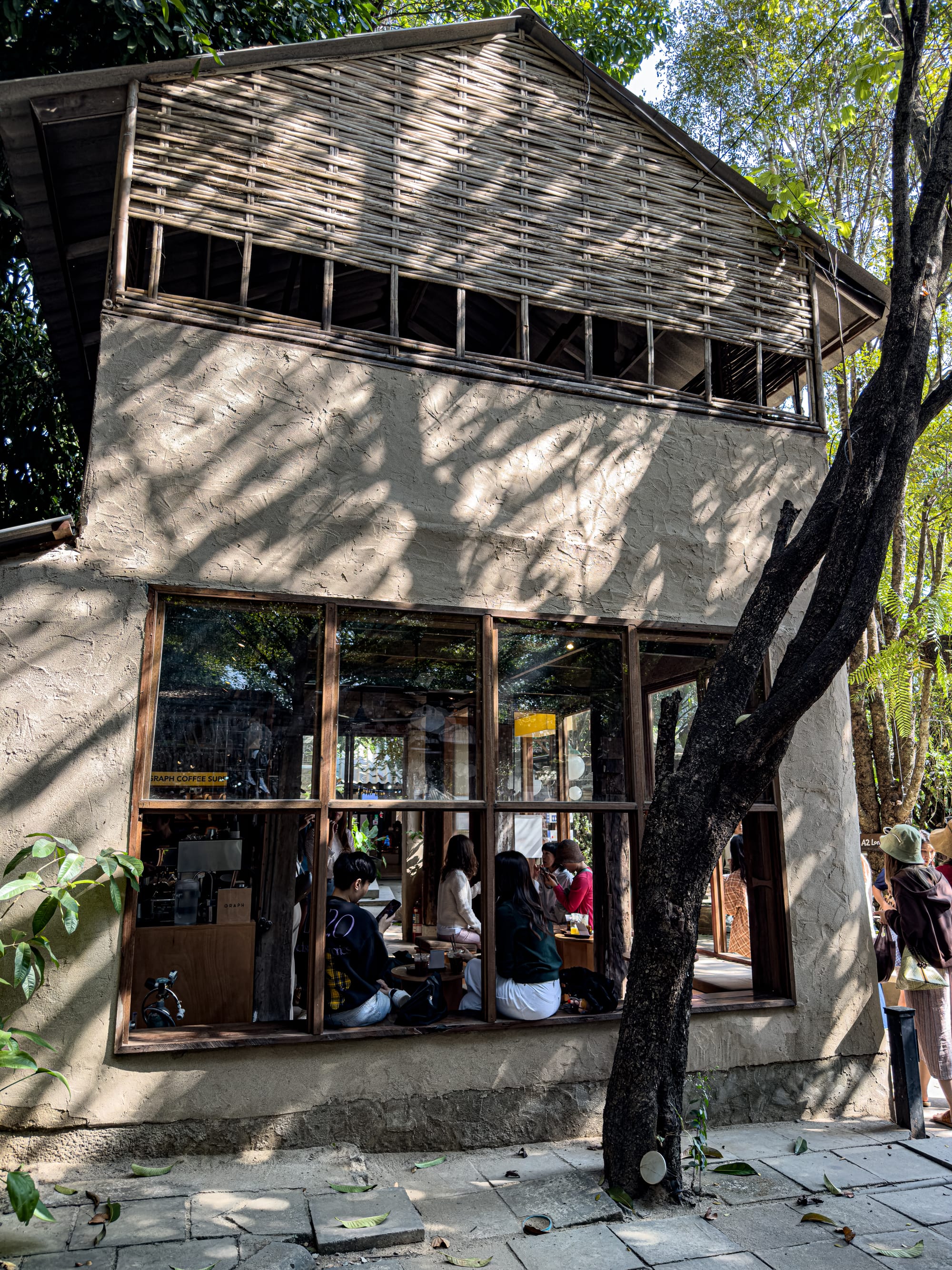
A minimalist concrete-and-wood café at Baan Kang Wat
These cafés are more than places to refuel; they are spaces to connect. Artists and students gather here with sketchbooks or laptops, exchanging ideas across tables. Travelers sit beside locals, drawn into conversations about Chiang Mai’s art scene, sustainability, or simply the day’s weather. There’s a rhythm to these interactions that reflects the spirit of the market: informal, curious, and open-hearted.
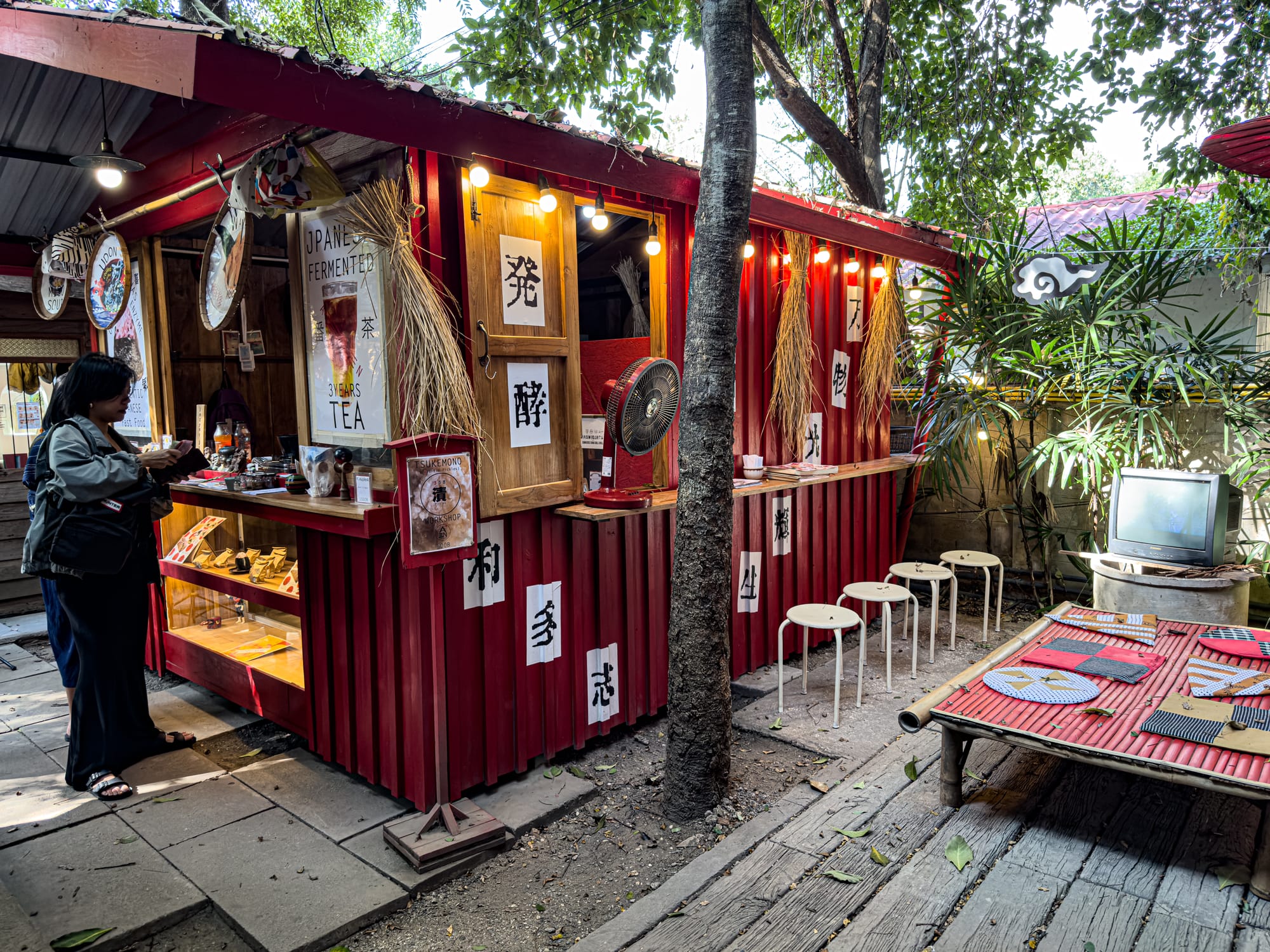
Even the seating areas outside the cafés add to this sense of community. Benches are shaded by broad-leafed trees, and some courtyards feature low tables surrounded by cushions, encouraging a slower pace.
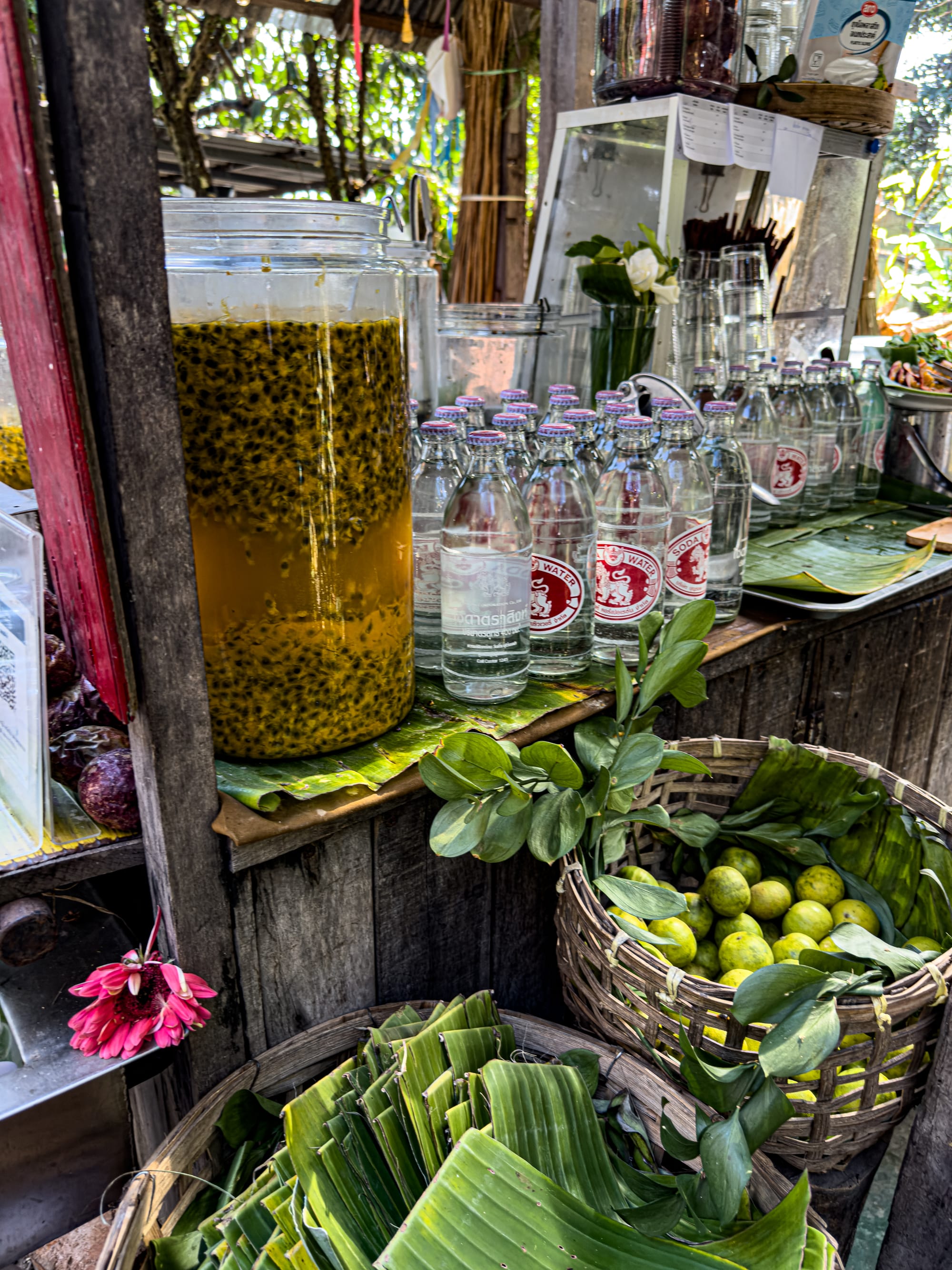
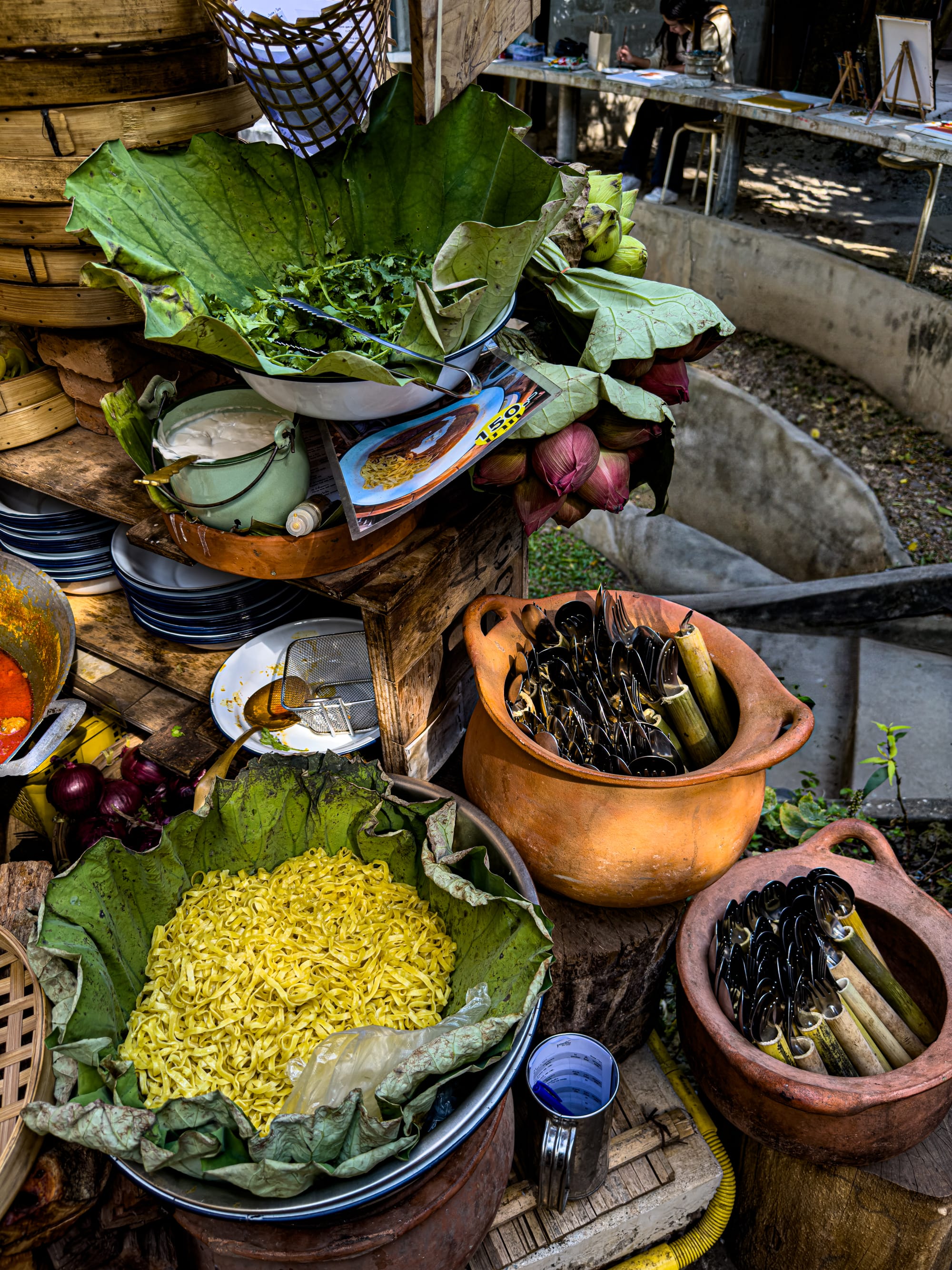
A colorful food and drink stall at Baan Kang Wat
Time at Baan Kang Wat feels expansive, as though there’s no rush to leave, only an invitation to stay and be part of the flow.
Art, craft, and sustainability
The heart of Baan Kang Wat is its artisans. Each shop here is more like a studio, where the line between workspace and display area is deliberately blurred. Potters shape clay at their wheels, while finished mugs and bowls dry on nearby shelves. Leatherworkers cut, press, and stitch pieces in the open, with tools scattered across well-used tables. Painters and illustrators display their work alongside sketchpads filled with works in progress, allowing visitors to see the evolution of their ideas.
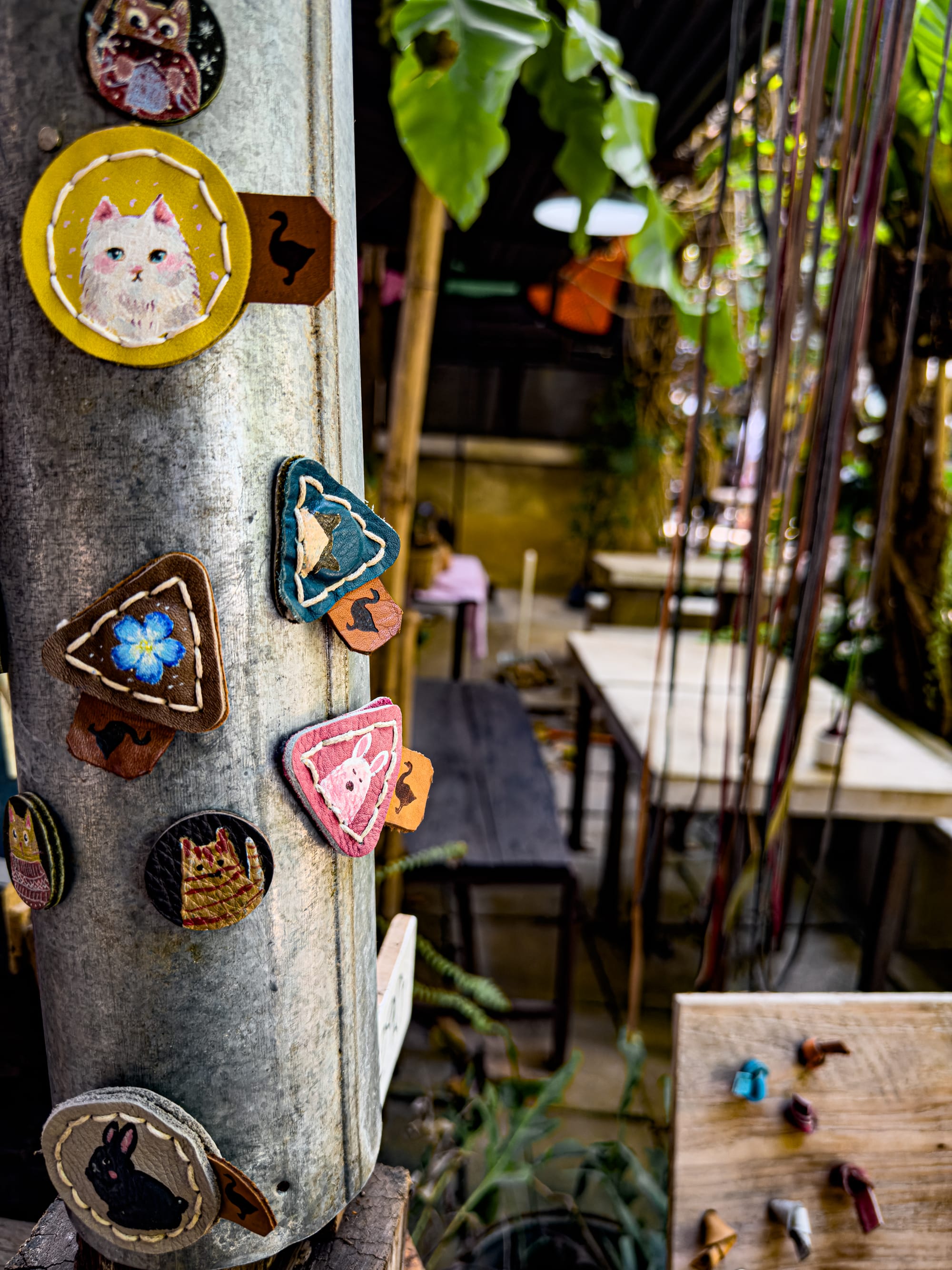
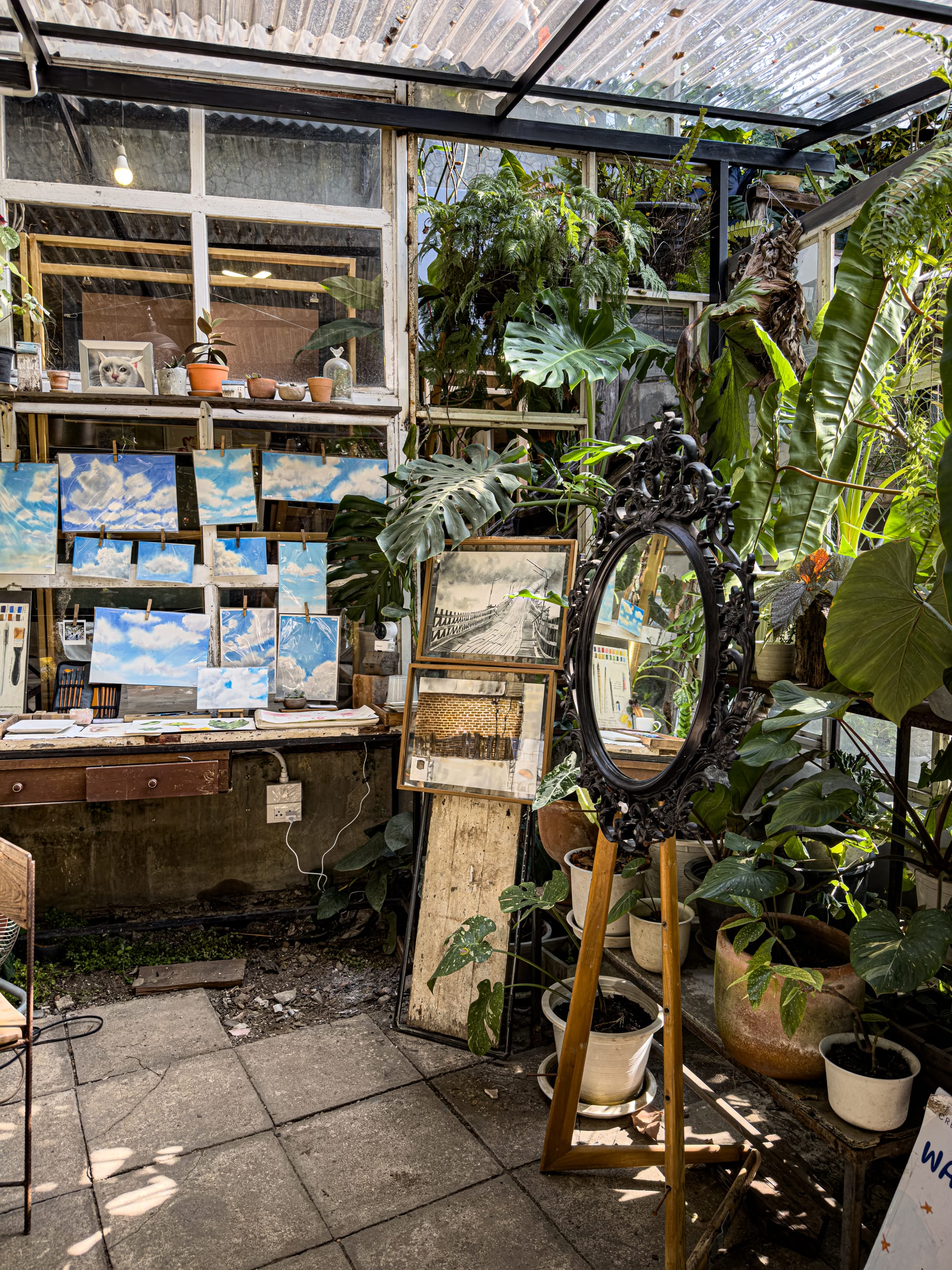
Handmade patches with whimsical animal designs, alongside a corner filled with sky-themed paintings
One of the most distinctive features is the emphasis on sustainability. Many shops highlight upcycled or natural materials. Jewelry might be made from reclaimed metal, notebooks from recycled paper, and textiles from plant-based dyes. The ethos here is not just about aesthetics, but about mindful creation—valuing the earth, honoring resources, and encouraging buyers to think about the story behind what they purchase.
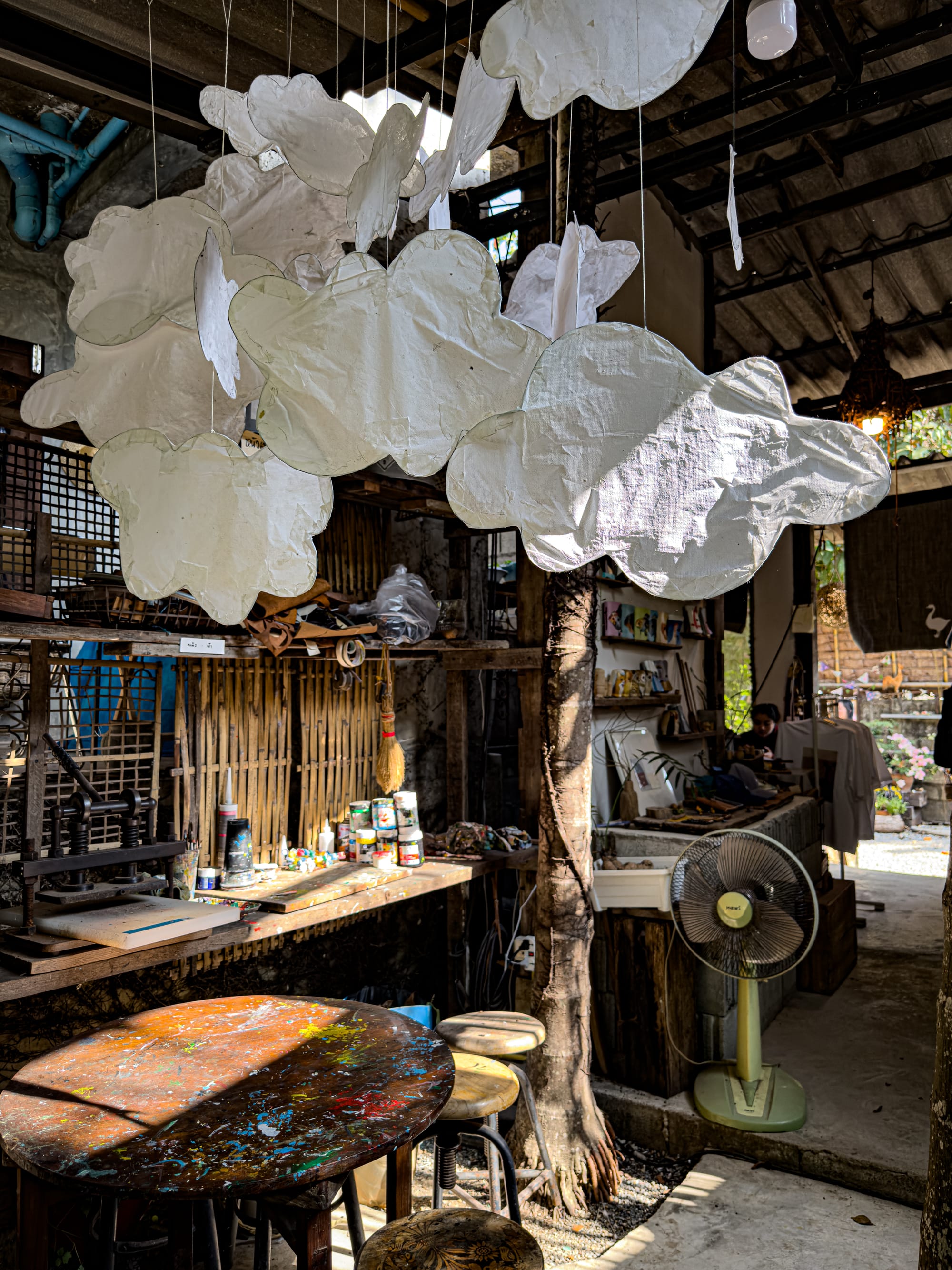
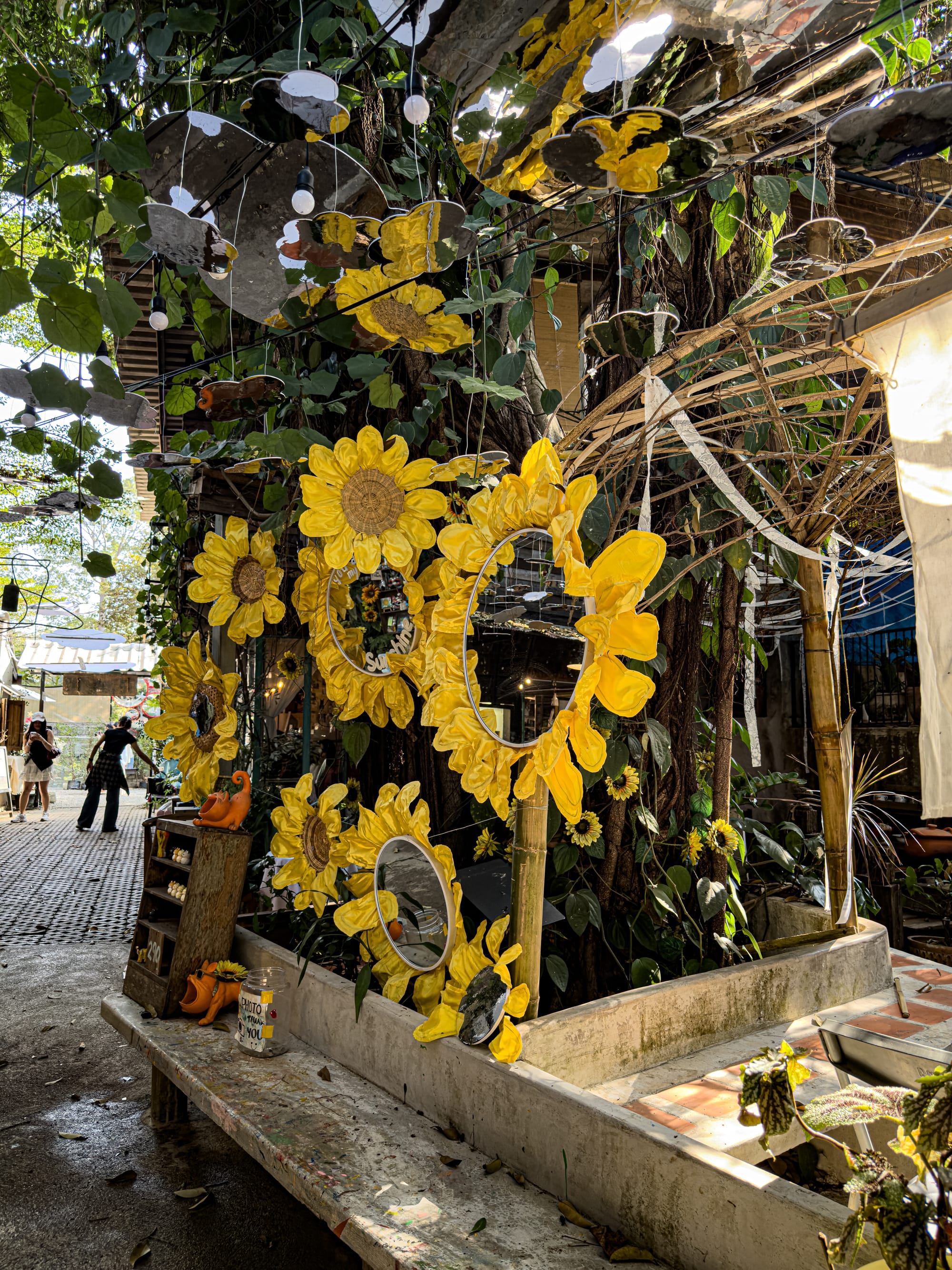
Creative corners at Baan Kang Wat, featuring paper cloud installations and a vibrant sunflower-themed display
This focus extends beyond the goods themselves. The buildings use local materials, and greenery is woven into nearly every corner, softening structures with vines and flowers.
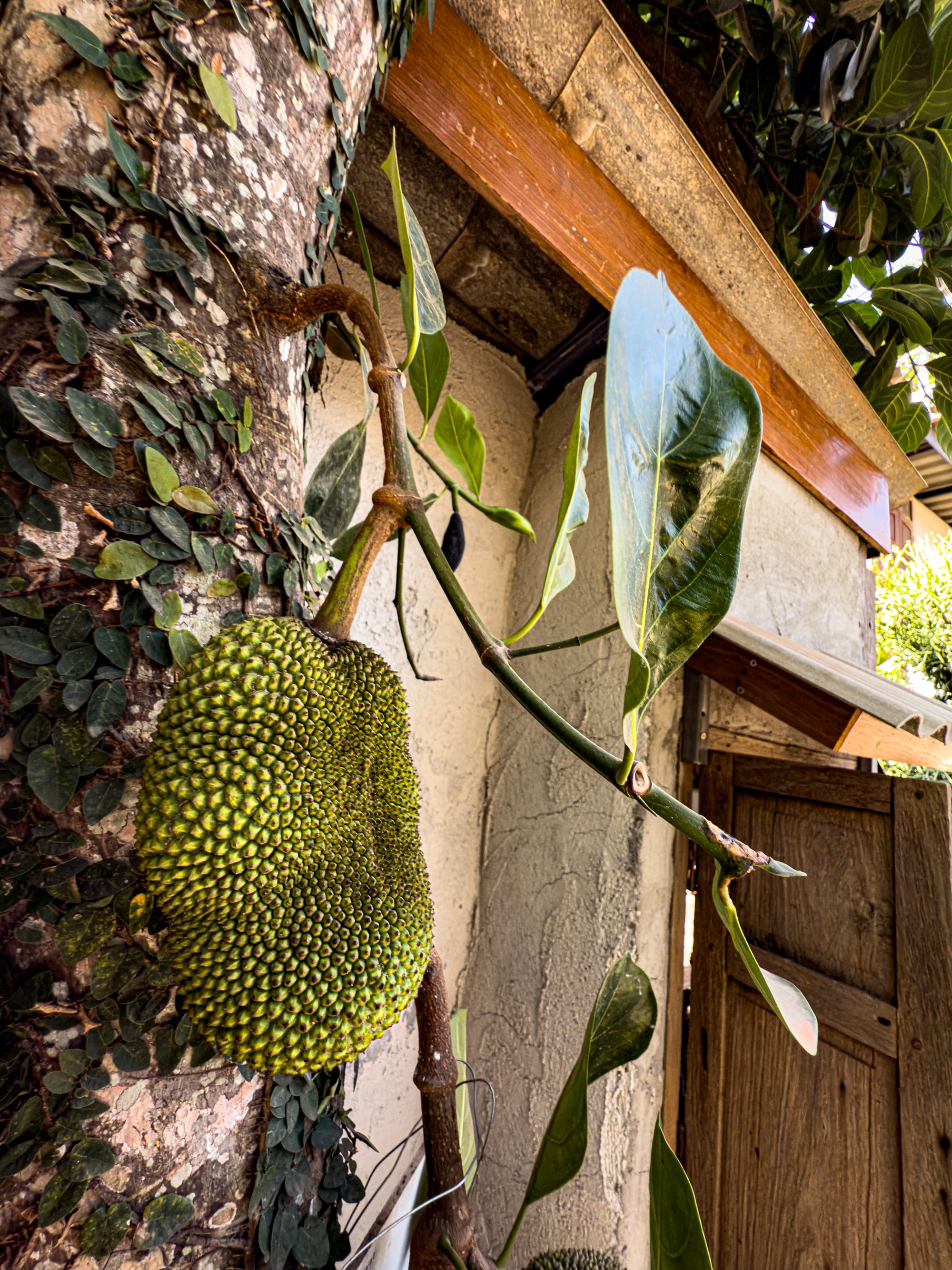
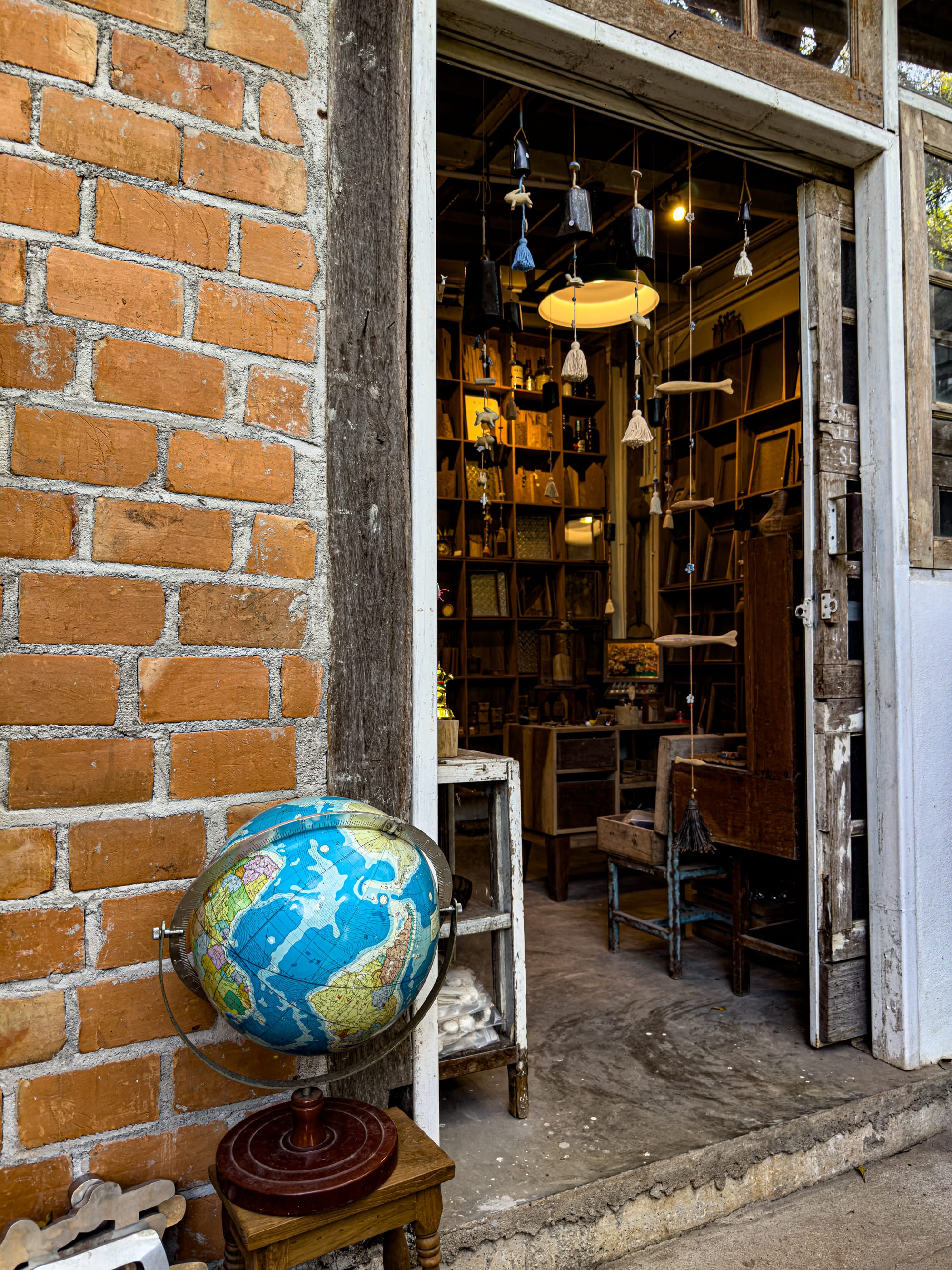
A jackfruit grows on a tree at Baan Kang Wat, while a vintage-style globe sits outside a brick-walled artisan shop
Rainwater collection, composting, and other eco-friendly practices are part of the market’s daily rhythm. In this way, Baan Kang Wat becomes more than a shopping destination—it’s a living example of how creativity and sustainability can intertwine.
The journal shop
Among the many shops at Baan Kang Wat, the journal shop Note a Book is a standout.
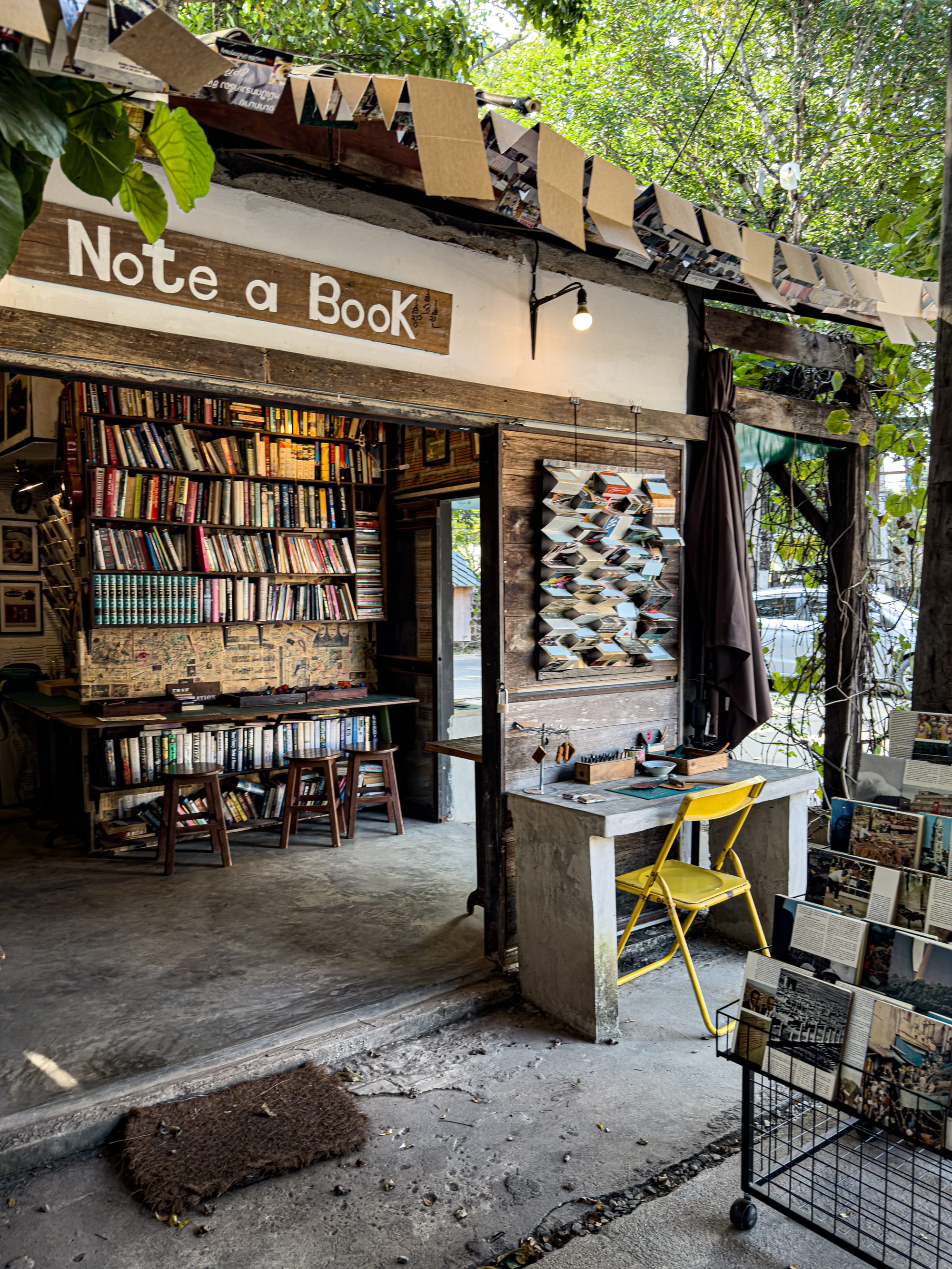
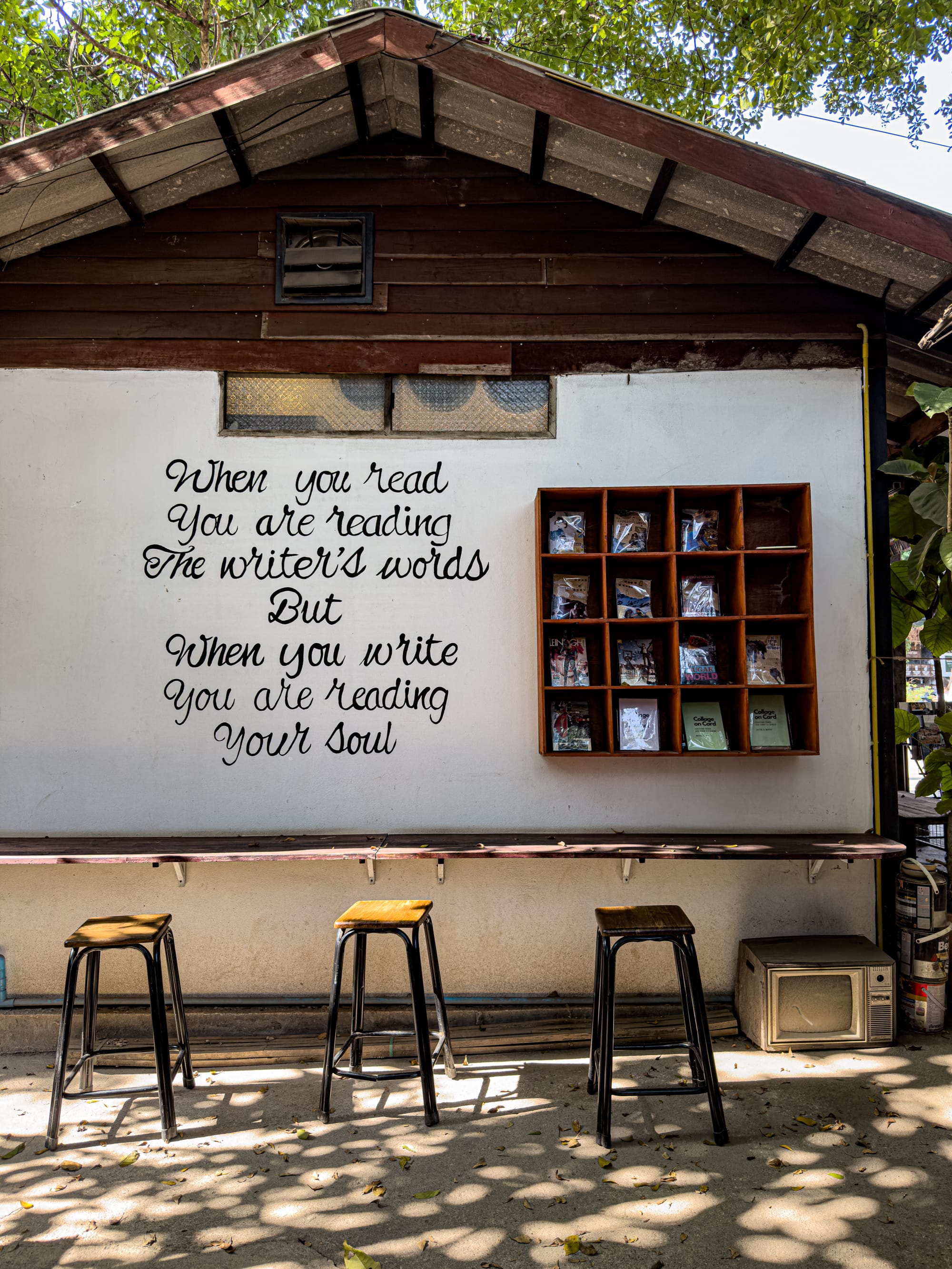
A cozy journal shop at Baan Kang Wat
Its walls are lined with handmade notebooks, each one slightly different: some bound in leather embossed with patterns, others stitched from recycled fabrics, and still others wrapped in minimalist, textured covers.
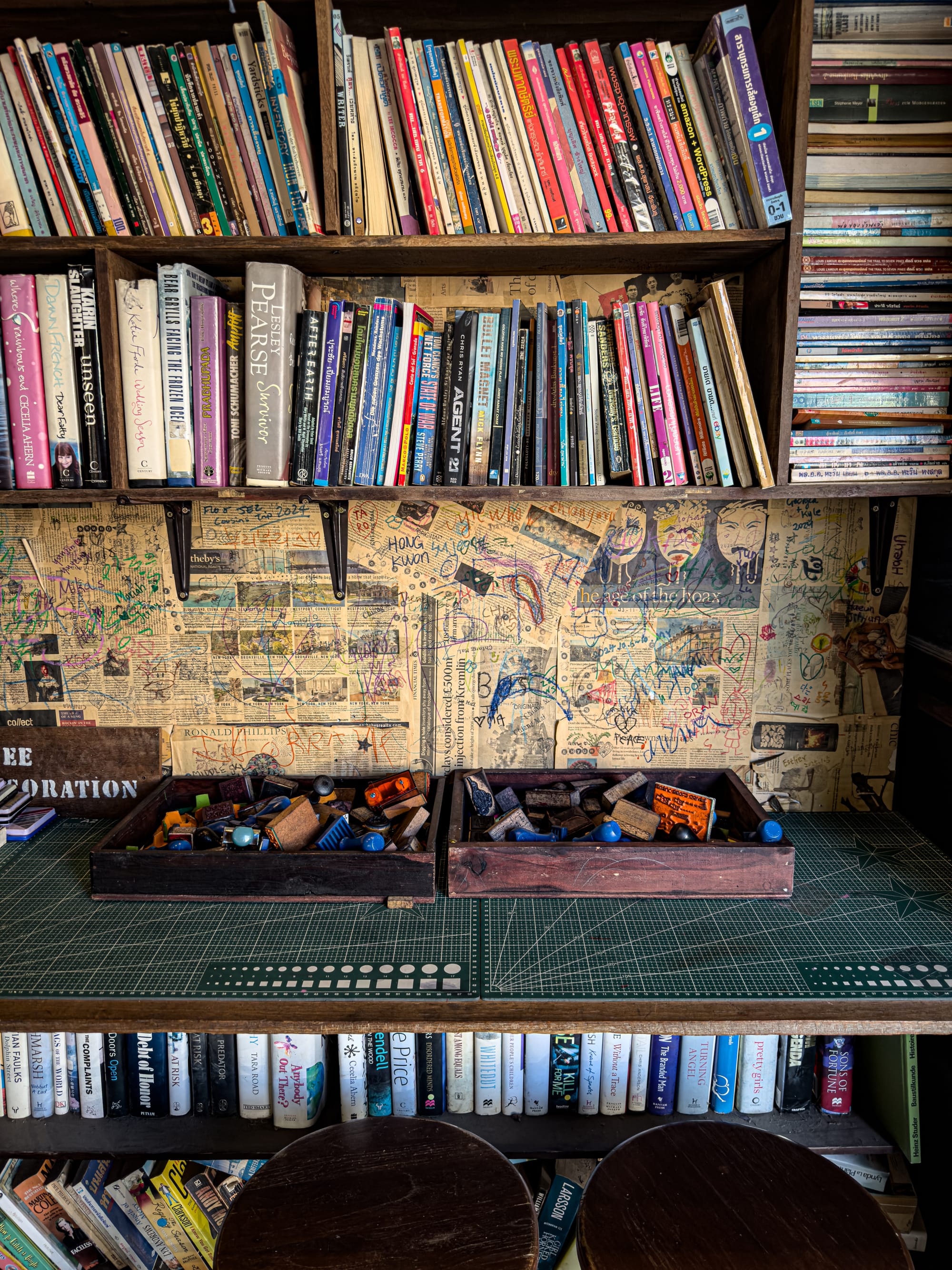
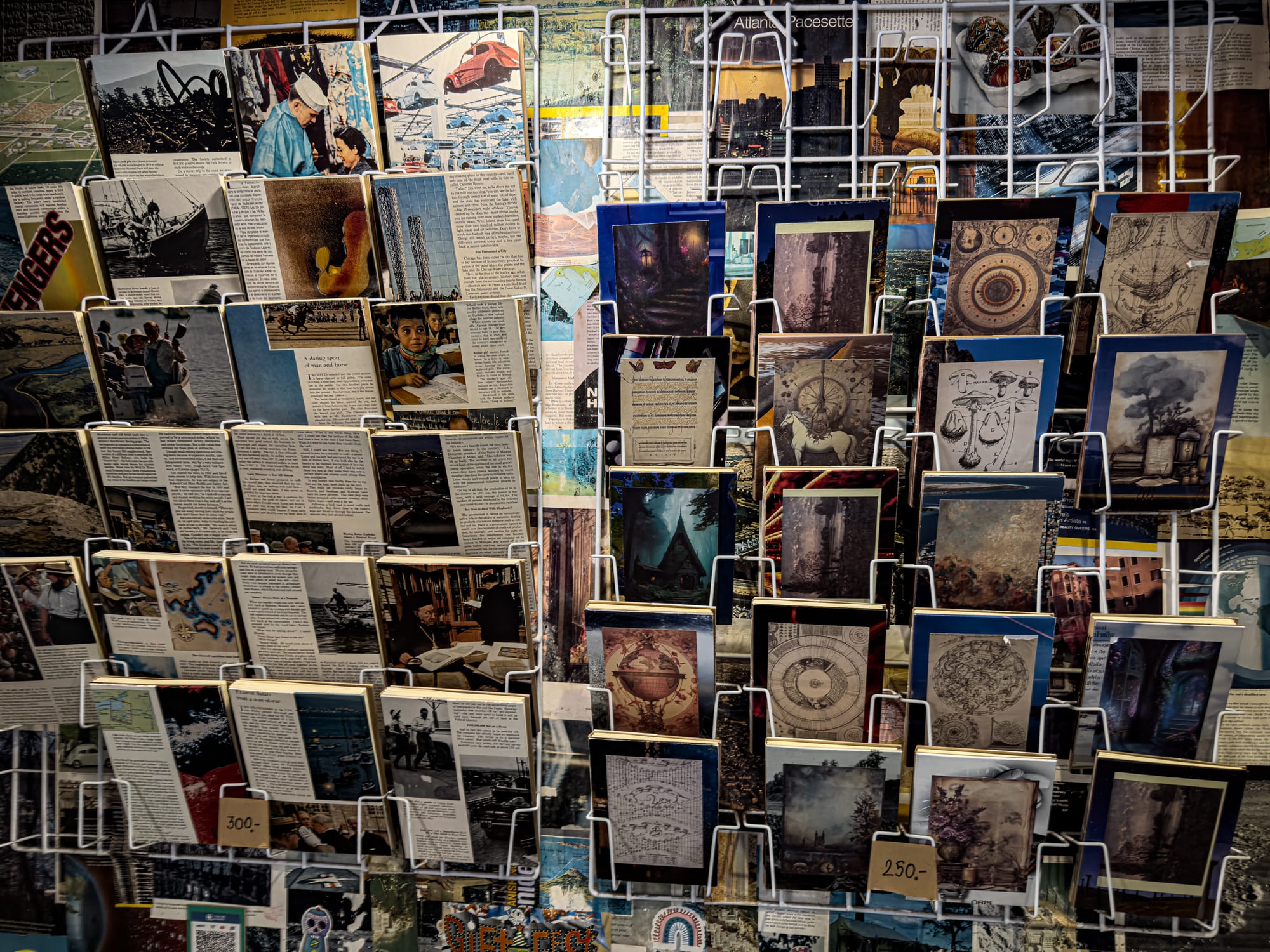
Inside Note a Book in Baan Kang Wat
Tables invite visitors to not only browse but to participate. Tools, stamps, and scraps of leather are laid out for customization, allowing people to leave with journals that bear their own creative mark.
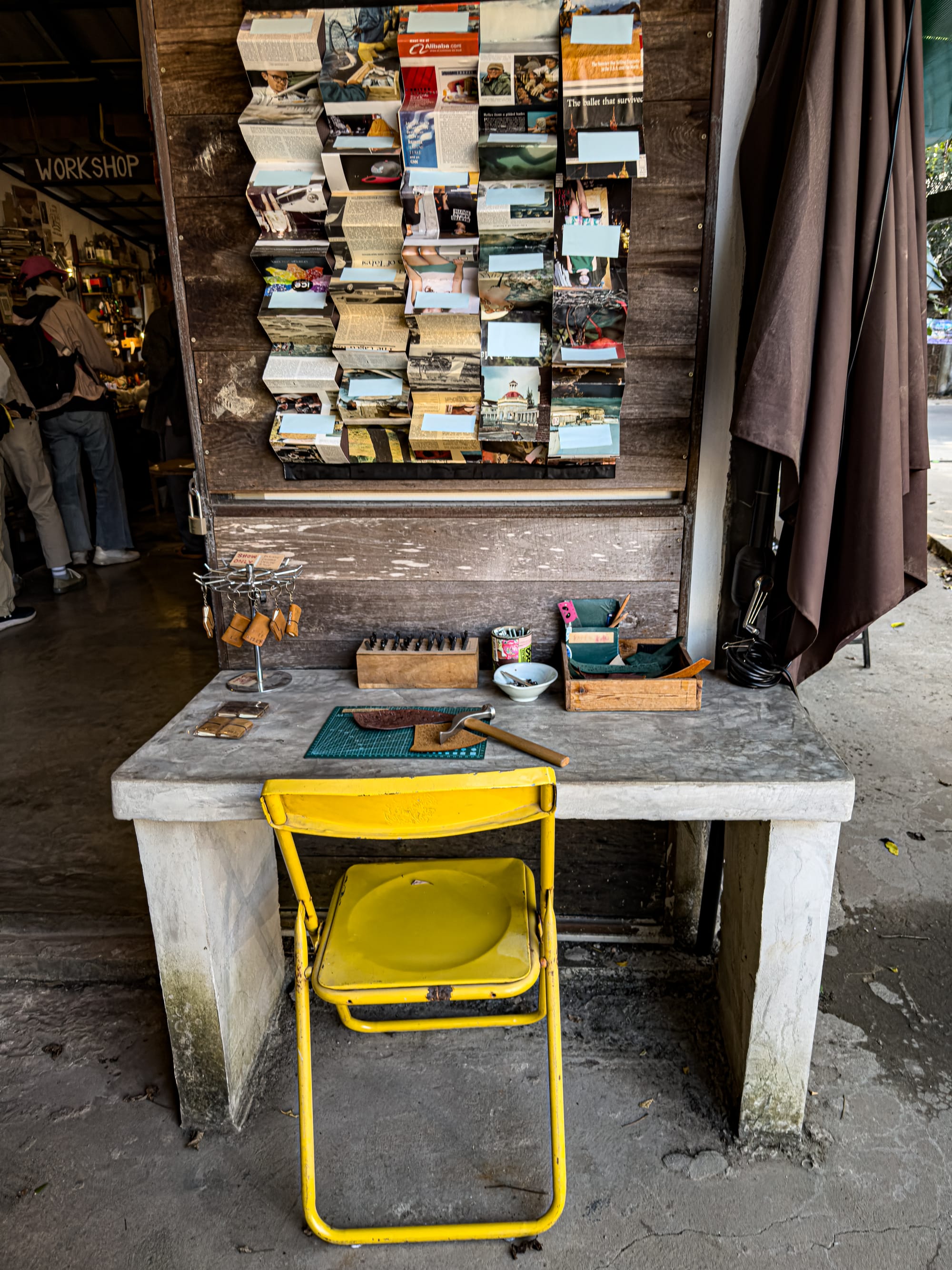
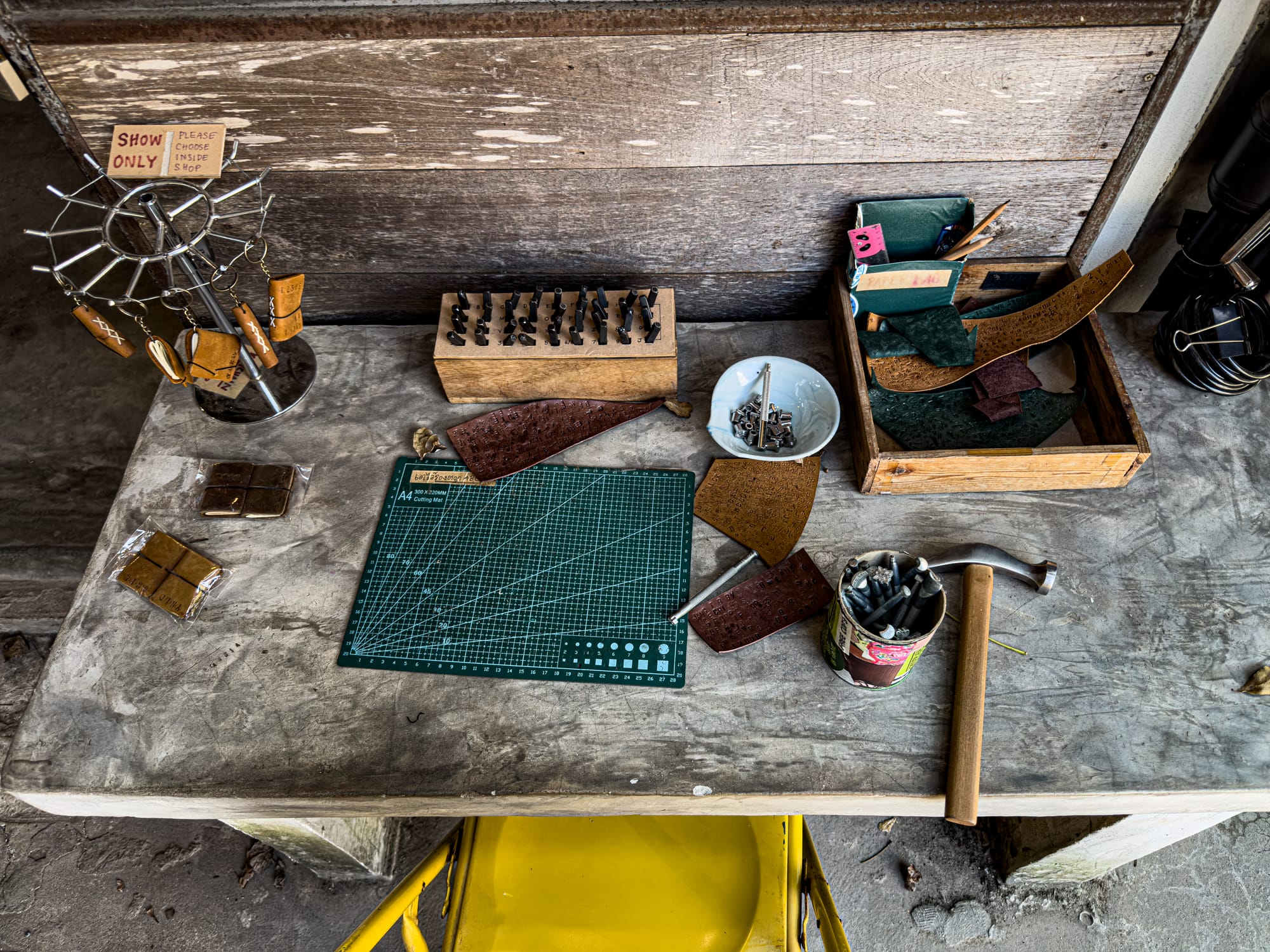
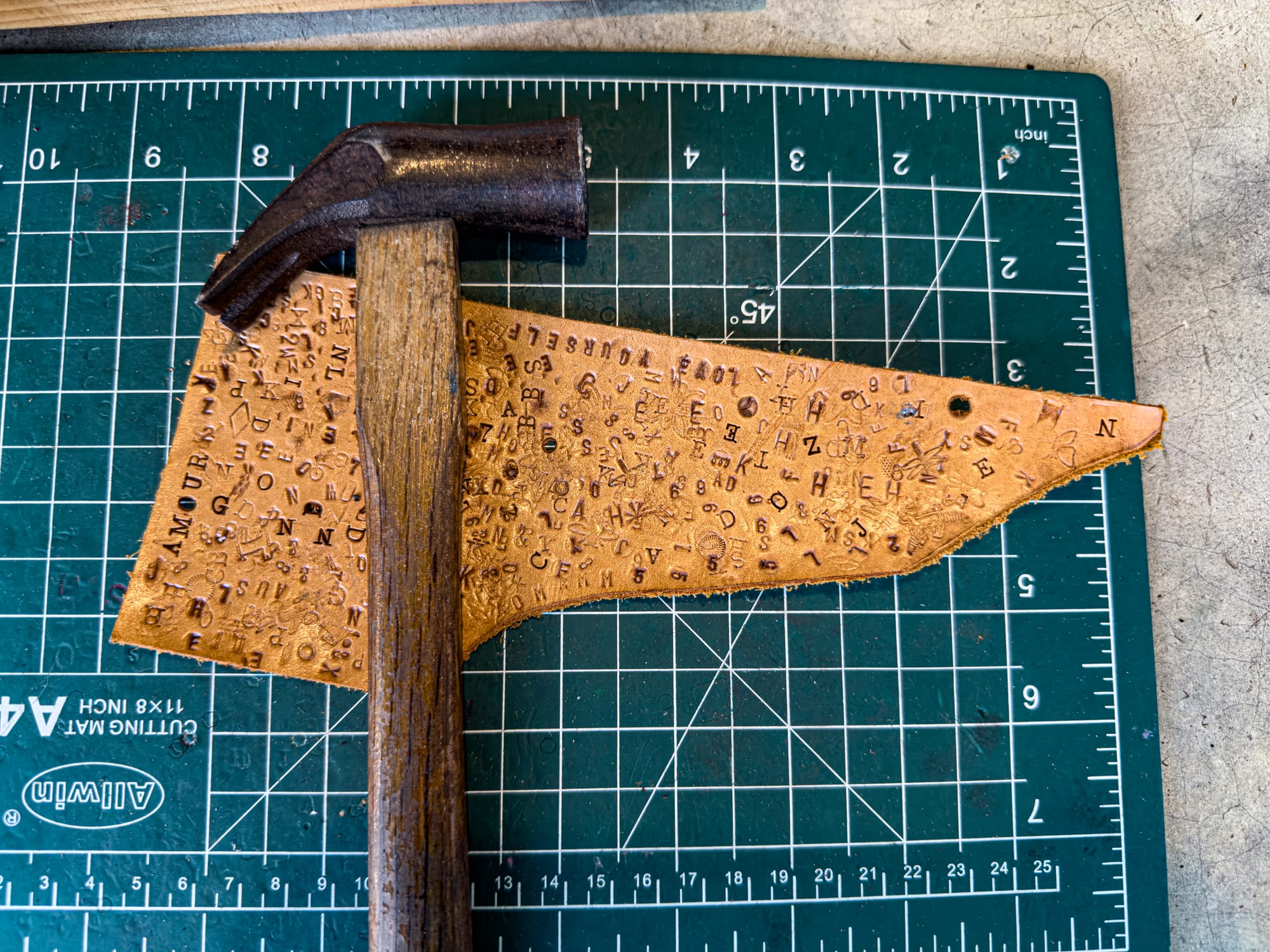
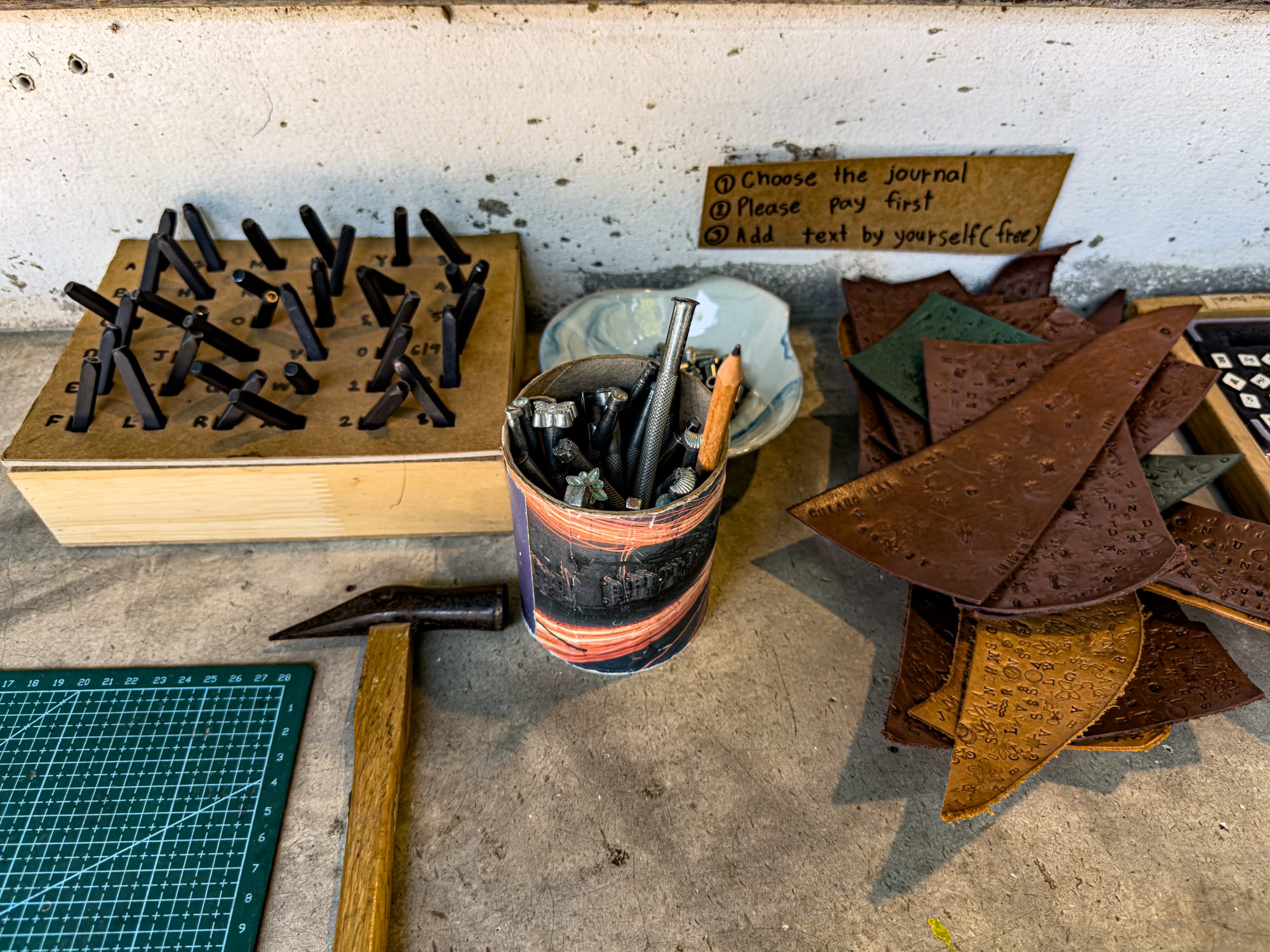
A stamping station at Note a Book, where visitors can personalize journals with their own imprints
This store embodies what makes Baan Kang Wat special. It is not just a place to purchase something, but to engage in the act of making. The space hums with quiet concentration, punctuated by the sound of hammers tapping leather or pages being flipped through. It feels at once intimate and communal—an experience shared through the tactile act of creation.
Food and flavors
While Baan Kang Wat is primarily an art village, food is woven into its fabric. Stalls and small kitchens offer simple yet thoughtful dishes: noodles served in handmade bowls, herbal teas steeped in glass jars, and snacks wrapped in banana leaves. The presentation often feels as artistic as the food itself, with ingredients arranged beautifully and care taken in every detail.
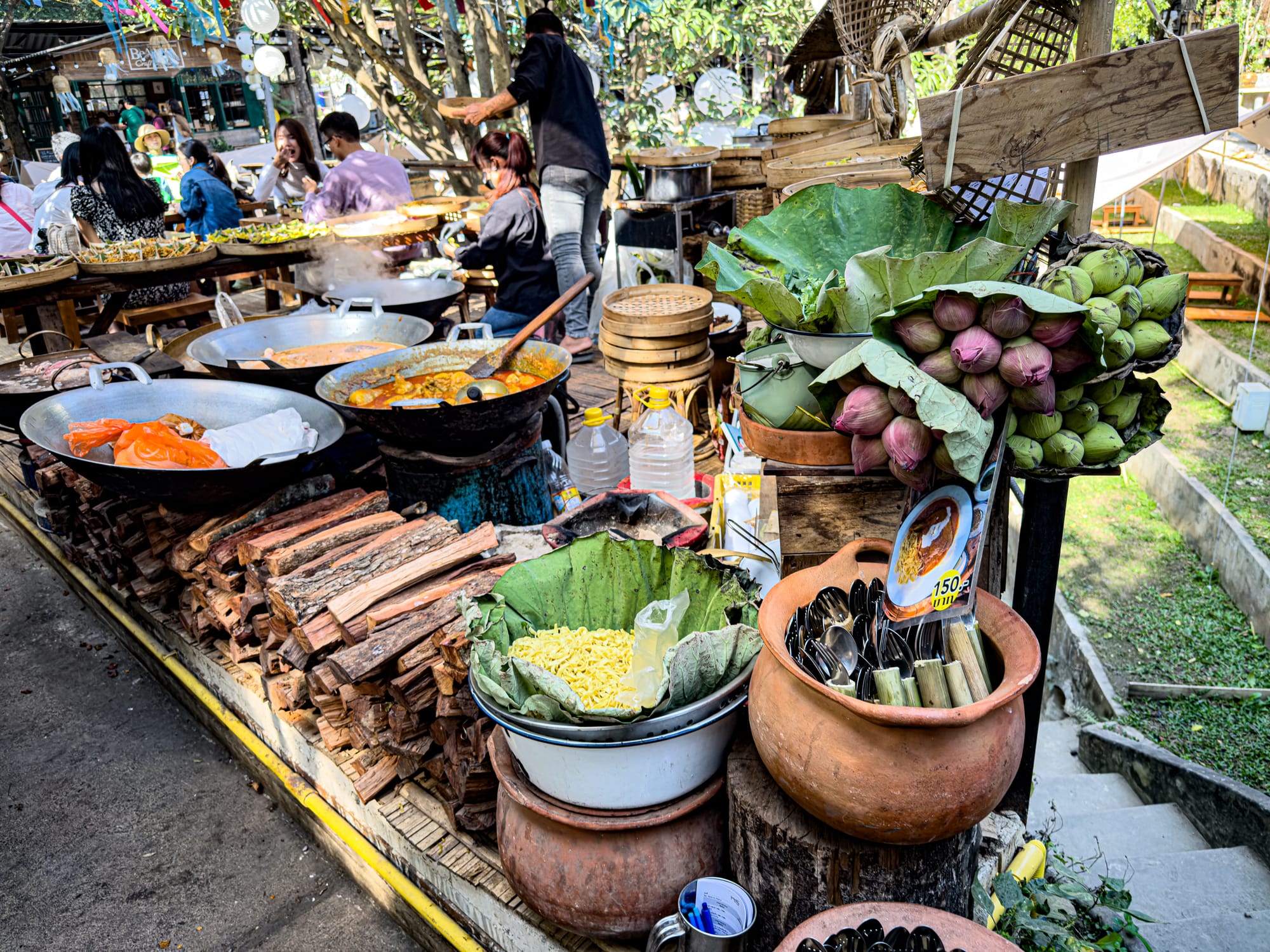
Freshness is central here. Many of the ingredients are sourced from local farms or even grown on-site. This connection to Chiang Mai’s agricultural traditions is part of the broader philosophy of the market: valuing what is local, seasonal, and sustainable. Eating here feels like an extension of the art that surrounds you—nourishment that engages not only taste but also sight and spirit.
Cultural and historical context
Baan Kang Wat is not an isolated phenomenon. It is part of a larger movement within Chiang Mai, a city long known for its artisanal heritage. Historically, Chiang Mai was a center for skilled craftspeople: woodworkers, weavers, silversmiths, and potters. These traditions continue today, but in recent years, a younger generation of artists and entrepreneurs has been reimagining them, blending traditional techniques with contemporary design.
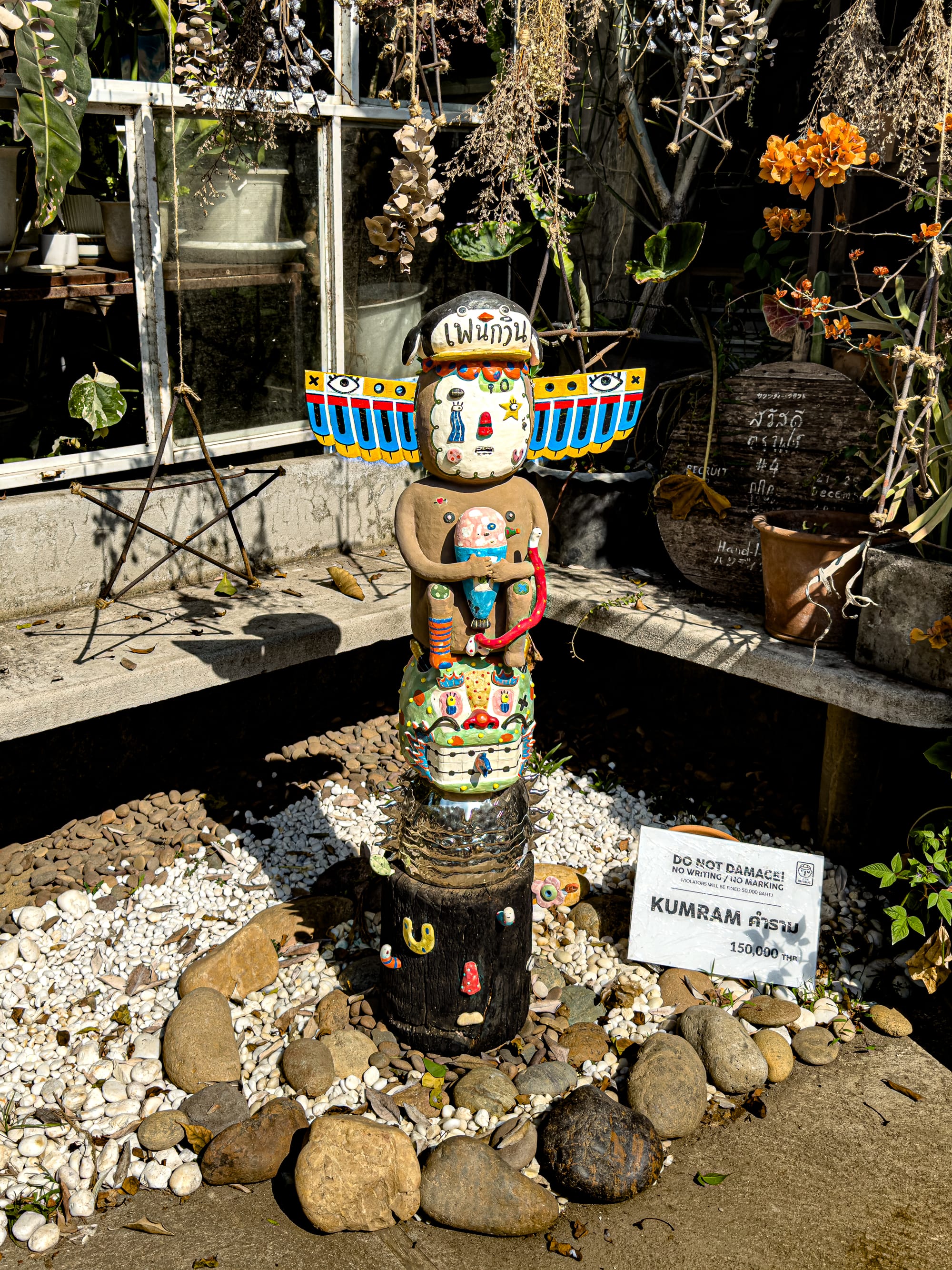
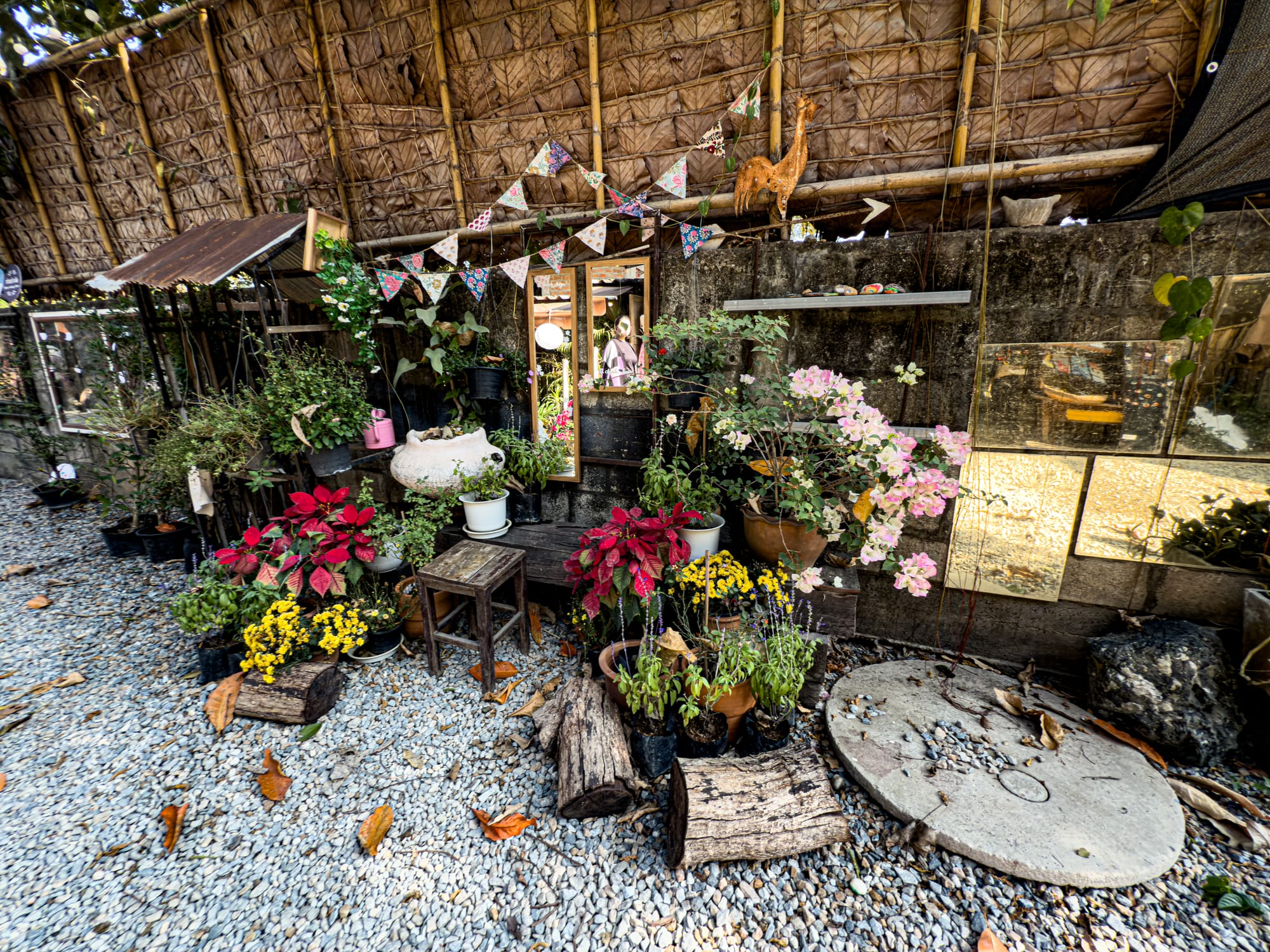
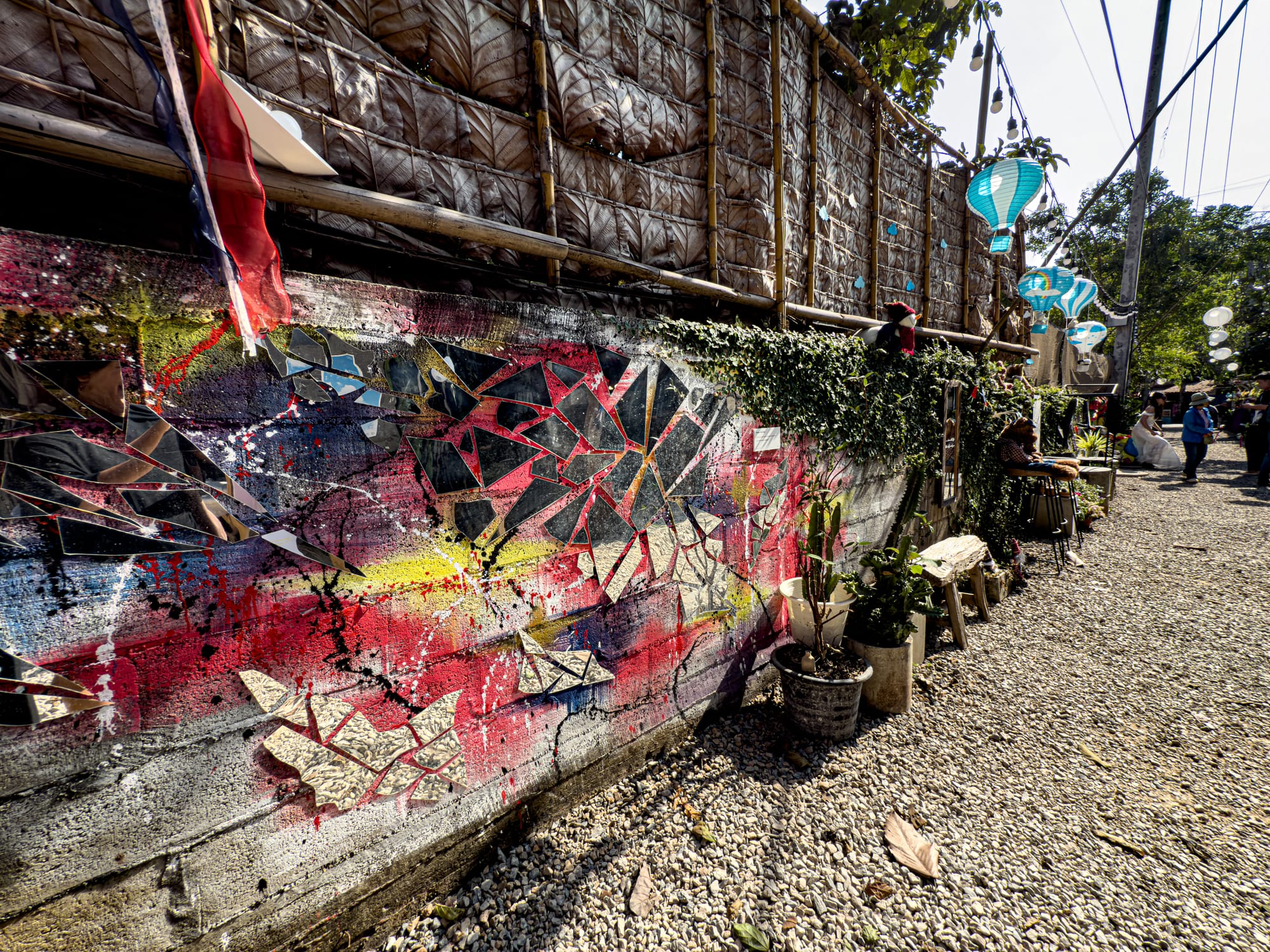
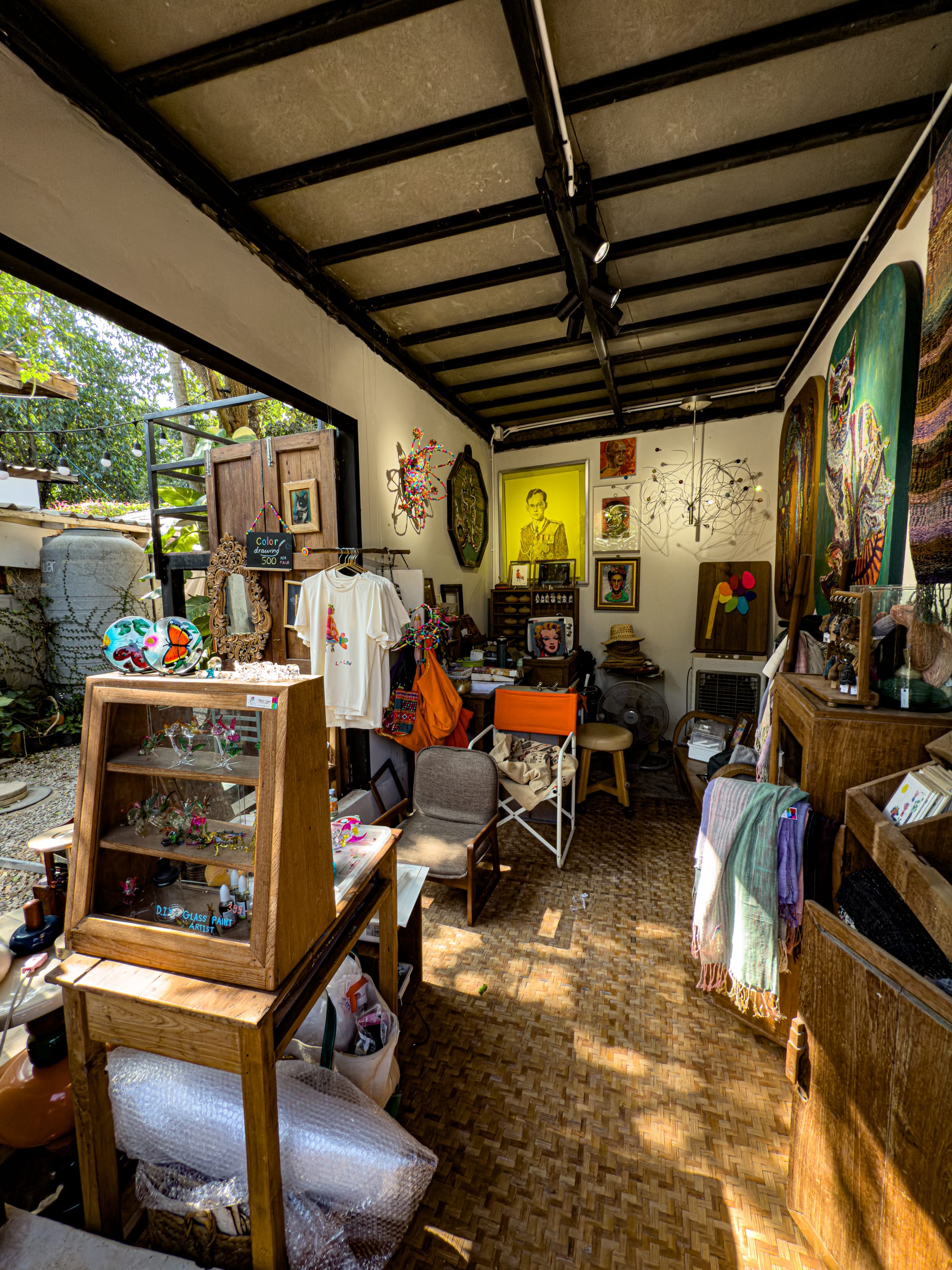
Artistic corners of Baan Kang Wat featuring whimsical sculptures and colorful street murals
The founding of Baan Kang Wat reflects this shift. Its creators wanted to create a space where these two worlds could meet—where heritage could be honored but also reinterpreted for modern audiences. The proximity to temples reinforces this sense of continuity, tying the market not just to commerce but to culture and spirituality.
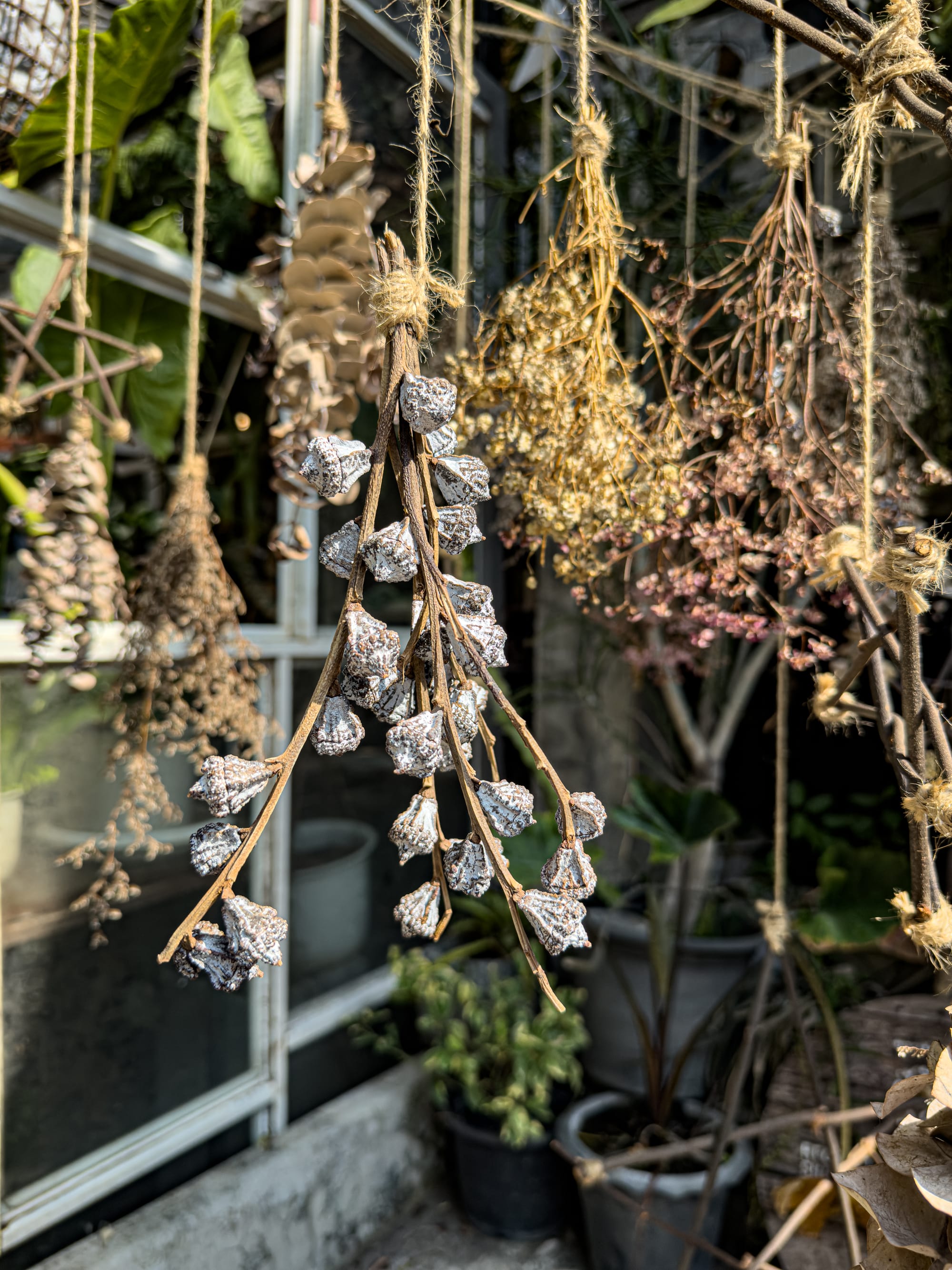
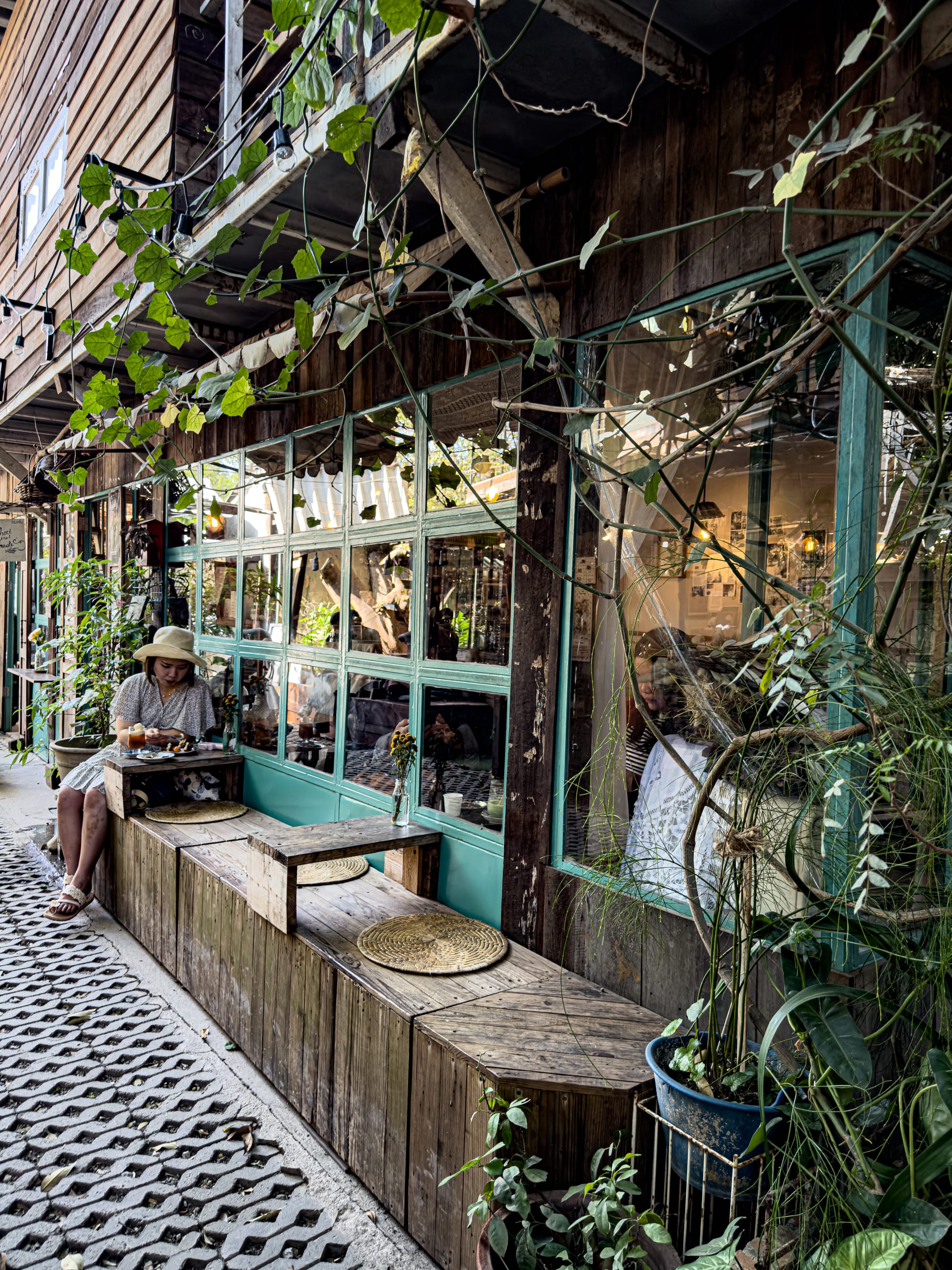
Hanging dried flowers and natural ornaments add a rustic charm, while leafy vines frame a cozy café corner
Today, Baan Kang Wat plays a vital role in Chiang Mai’s creative identity. It is a gathering place for artists, a showcase for local talent, and a model for how markets can foster community rather than consumerism. Its success has inspired similar projects across the city, but Baan Kang Wat remains unique in its intimacy and its vision.
Why Baan Kang Wat endures
The enduring appeal of Baan Kang Wat lies in its layers. It is at once a marketplace, a community hub, a creative workshop, and a cultural landmark. Visitors may come for coffee, a notebook, or a handmade bowl, but what lingers is the memory of the atmosphere: the quiet hum of creativity, the warmth of conversations, the sense of being part of something both local and universal.
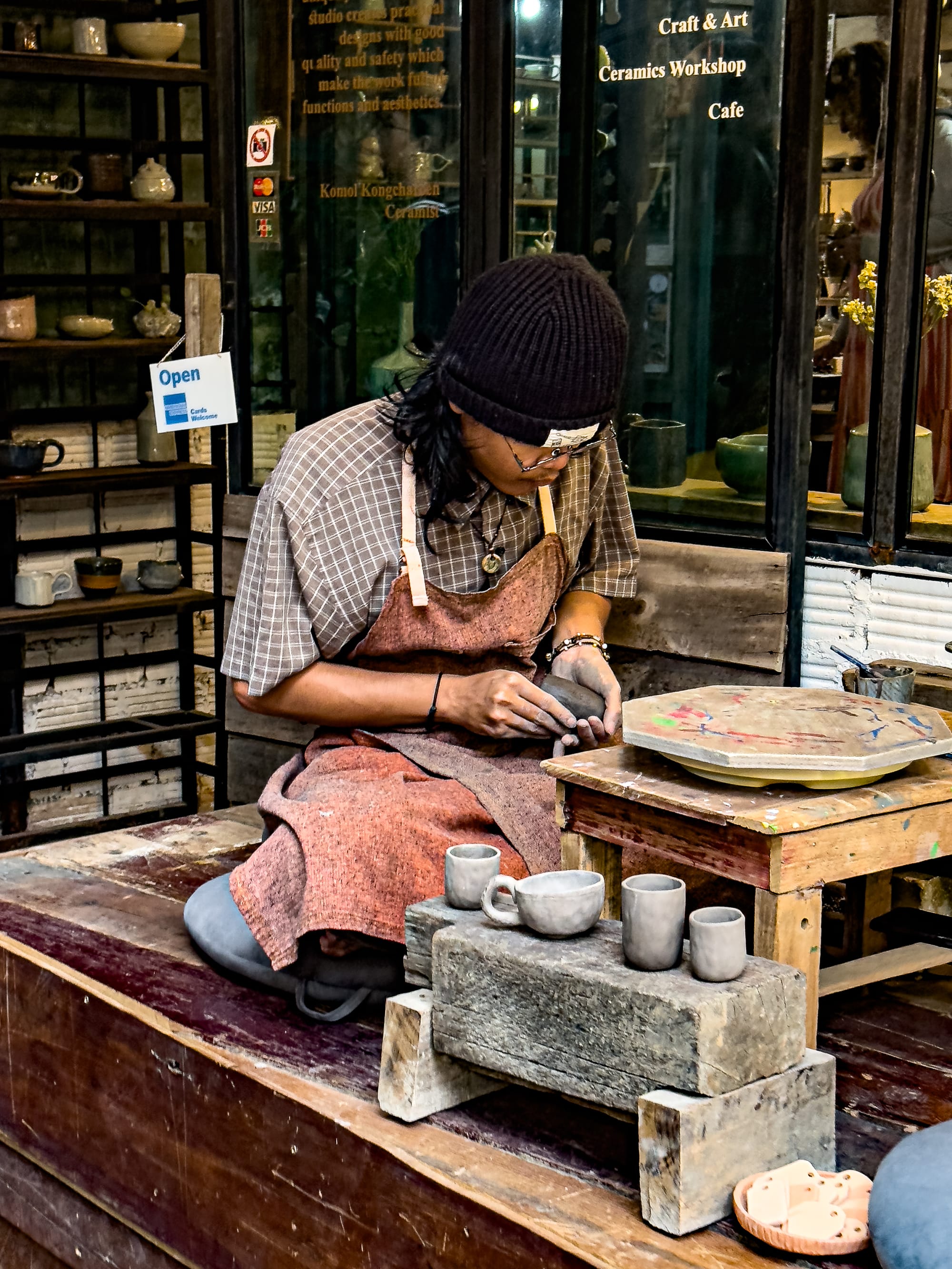
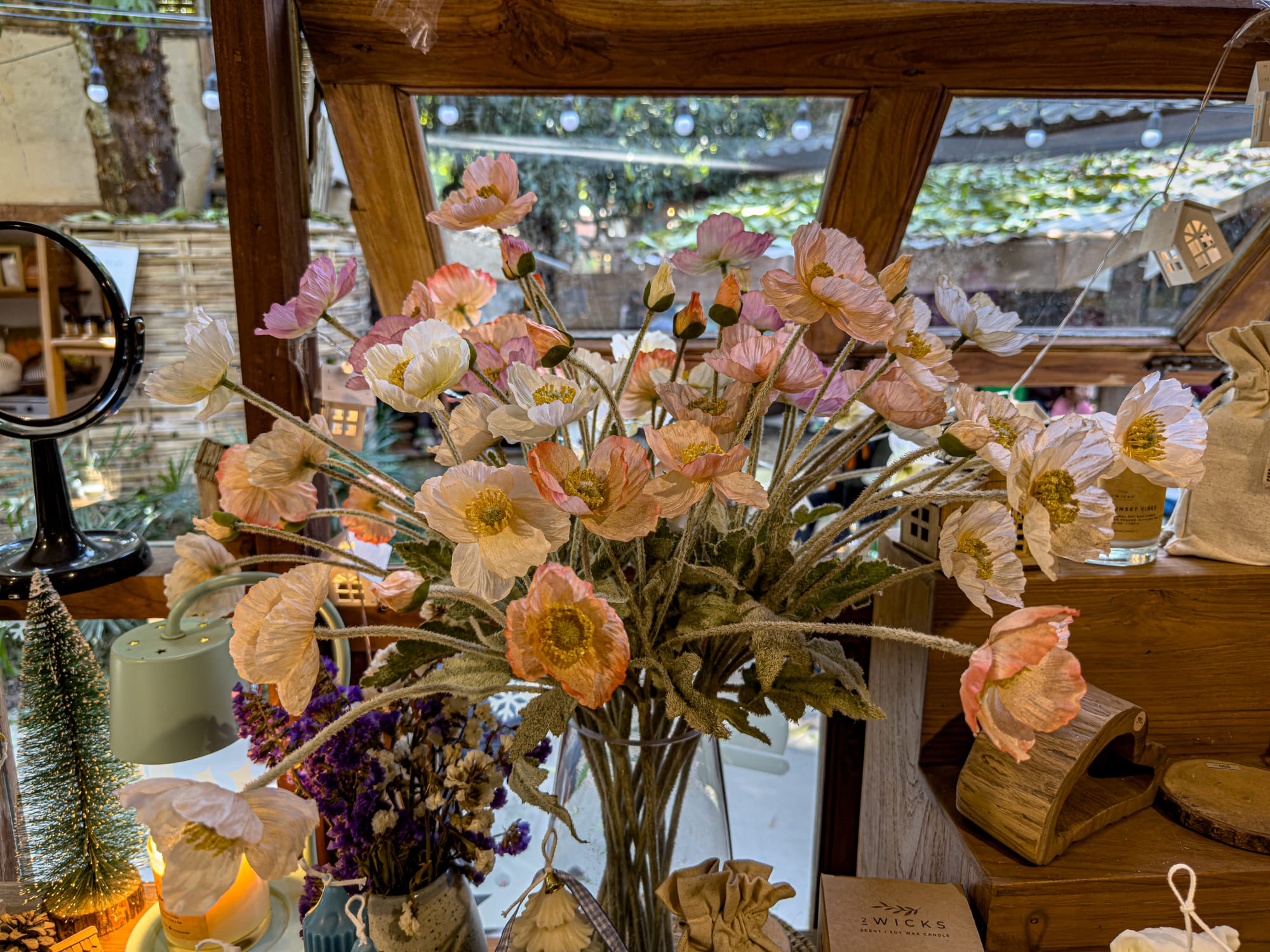
A ceramic artist shapes clay pieces and a nearby shop displays delicate handcrafted paper flowers
It endures because it is rooted in values that go beyond commerce. It values sustainability, connection, and the creative process itself. It bridges the past and the present, weaving heritage into modern life. And it offers a vision of what Chiang Mai can be: a city where art and community are not separate, but intertwined.
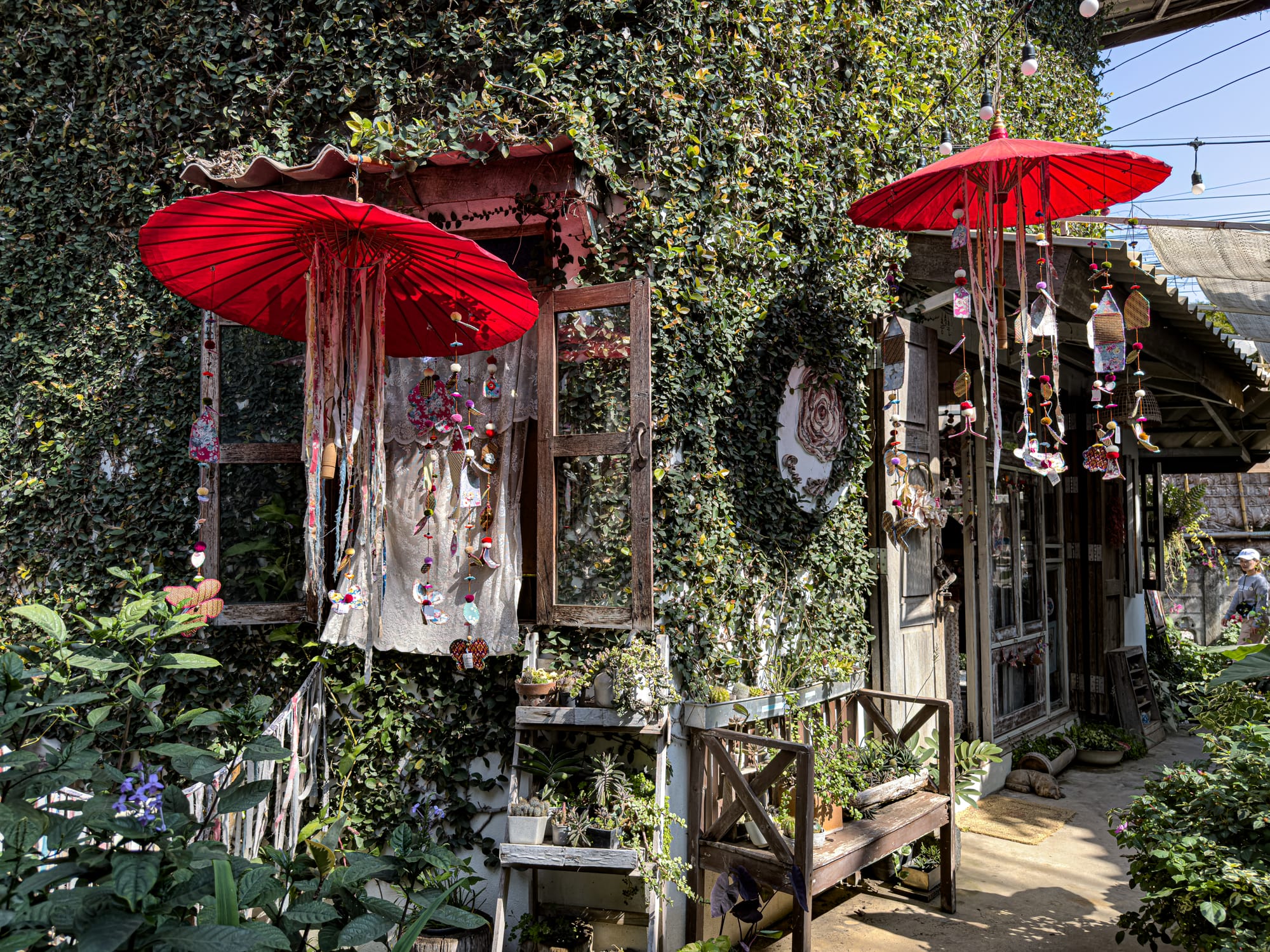
For travelers, Baan Kang Wat is a reminder that some of the most memorable places are not the largest or the loudest, but the ones that make space for authenticity. For locals, it remains a touchstone—a place to return to, to gather, and to create.






